Portugal is certainly having a moment — or a decade — as a travel destination darling. People are finally realizing that between the architecture, landscape, culture, and food, this country deserves more than a passing glance or a quick trip to Lisbon. But when you are planning your one week Portugal itinerary, it can be hard to decide what to squeeze in.
On my second trip to Portugal, I spent 17 nights traversing the country, moving from place to place almost every day. But that is no way to spend a true vacation. While it is a small country, if you only have 7 days in Portugal, you are better off just visiting two (or max three) major cities or regions and saving the rest for a return trip.
To help make planning a trip to Portugal a little easier, I’ve put together four different 1 week Portugal itinerary options to choose from. These 7 day Portugal itineraries make sense geographically and logistically, and I’ve tried to provide some guidance to help you choose between them to find the right match for the type of trip you are looking for.
These 1 week Portugal itineraries focus on the mainland and don’t include the islands, since those really deserve a week on their own, but I do have some tips for visiting the Azores and great suggestions on things to do on São Miguel, the largest of the nine islands.
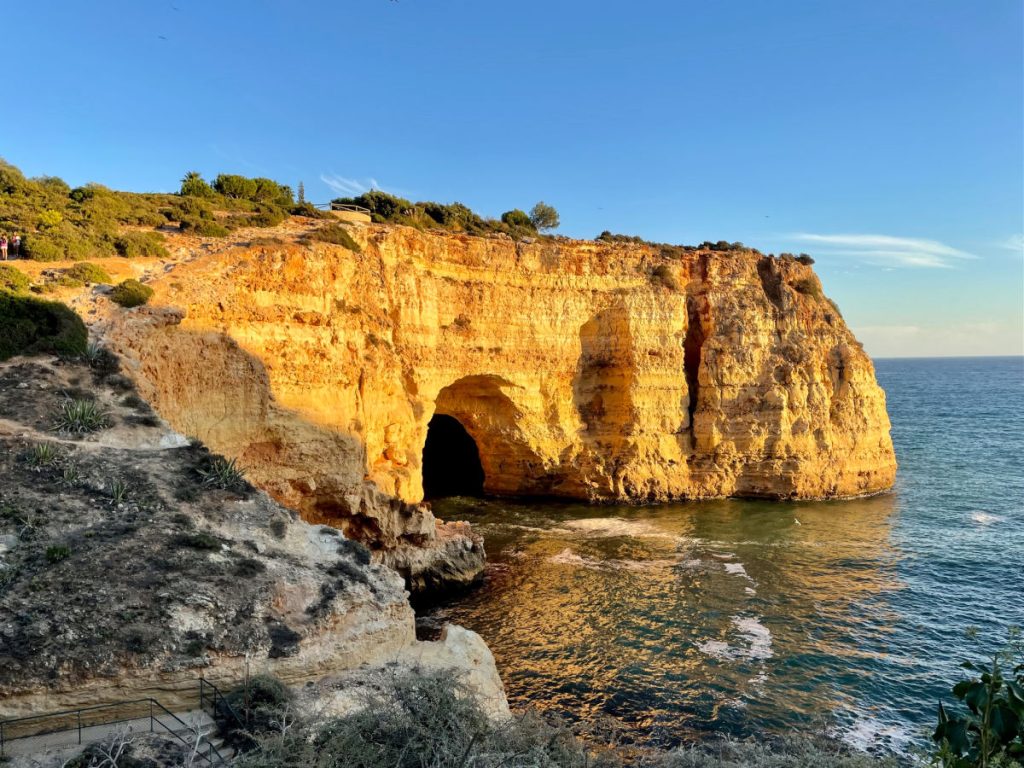
Before you start planning your trip, you may also want to see my breakdown of how much a trip to Portugal costs to see how long you can afford to stay. While Portugal is still more affordable than some neighboring European countries, it is no longer a pure budget destination.
Do you need help planning your trip? If you are feeling overwhelmed and don’t have the time or resources to wade through tons of information and question your decisions, I help clients plan a custom itinerary, tailored to your interests and travel style. Learn more about my trip planning services.
One week Portugal Itinerary Options:
I have put together four options so that you can pick the Portugal travel itinerary that is most interesting to you for your one week in Portugal:
- #1: Lisbon, Douro, and Porto (Main Cities and Historic Wine Region)
- #2: Lisbon and Interior Alentejo (Capital of Portugal and Countryside with Small Villages)
- #3: Lisbon and Algarve (Capital City and Gorgeous Coastline/Natural Attractions)
- #4: Lisbon and Comporta (Coastal Alentejo) (Largest City and Sandy Beaches)
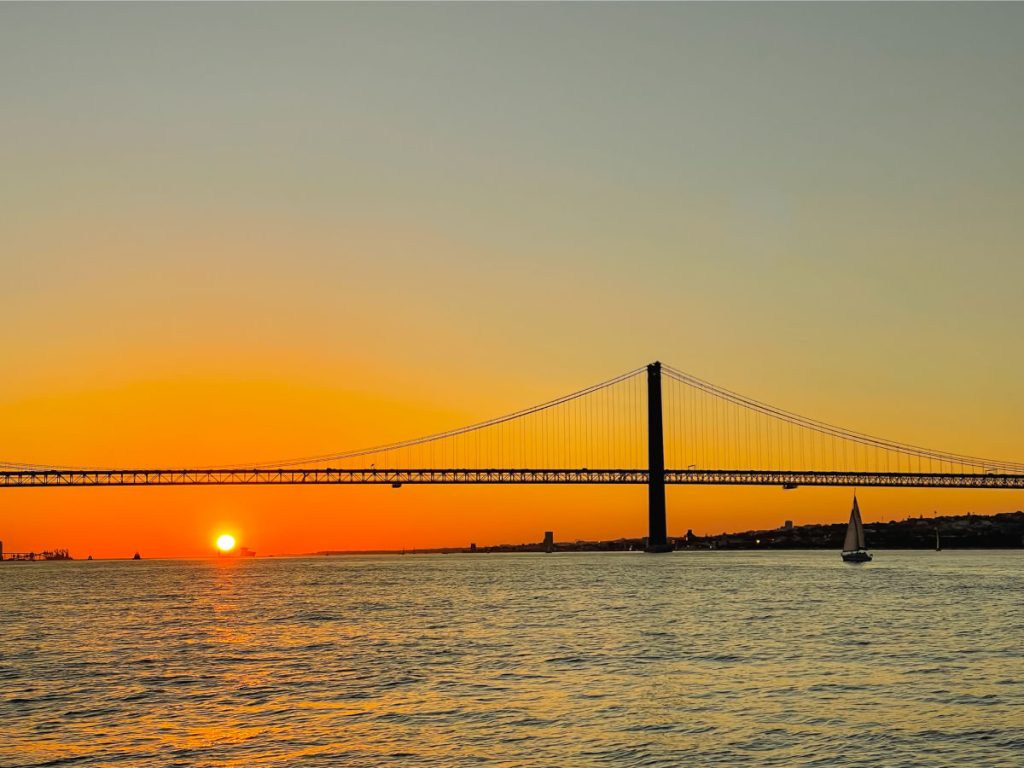
Portugal Itinerary #1: Lisbon, Douro, Porto
Note: This post may contain affiliate links. If you click a link and make a purchase, I may receive a small commission. All opinions are my own.
One of the most popular choices for a one-week Portugal itinerary is to visit the capital city of Lisbon, along with Porto and the Douro River Valley. This is a great choice for couples, wine lovers, solo travelers, and even families that enjoy a mix of urban exploration, history, and agritourism.
I would recommend the following:
| Day | Highlights | Stay |
| 1 | Lisbon city highlights tour | Lisbon |
| 2 | Belem, Alfama, and sunset sail on the Tagus River | Lisbon |
| 3 | Day trip to Sintra (Optional extra day in Lisbon: food tour or day trip to Cascais) | Lisbon |
| 4 | Drive or train to the Duoro Valley | Duoro Valley |
| 5 | Wine tasting tour in the Duoro Valley | Duoro Valley |
| 6 | Port wine tasting, Gaia, WOW (World of Wine) | Porto |
| 7 | Tour Porto | Porto |
When to Go
While best time for this trip is during the early fall, when the wine harvest is in full swing, it can be taken year-round. I would recommend trying to avoid the most popular summer months and holiday/school breaks, as the cities can get extremely crowded at those times.
Getting There

What I love about this itinerary is that it is really doable as a car-free vacation if you are willing to travel by train or pay for a transfer. While you can drive from Lisbon to Porto easily enough, you do NOT want to have to drive (and especially park) in either Lisbon or Porto. And, if you are going to be wine tasting while in the Douro Valley, it is better to take a wine tour or hire a driver there as well.
You can either fly into Lisbon and fly out of Porto, or the reverse. TAP Airlines is generally going to have the most options, with direct flights to Lisbon or Porto from a number of major USA cities including Boston, New York (EWR), Washington D.C., Miami, Chicago, and San Francisco.
Day 1: Lisbon
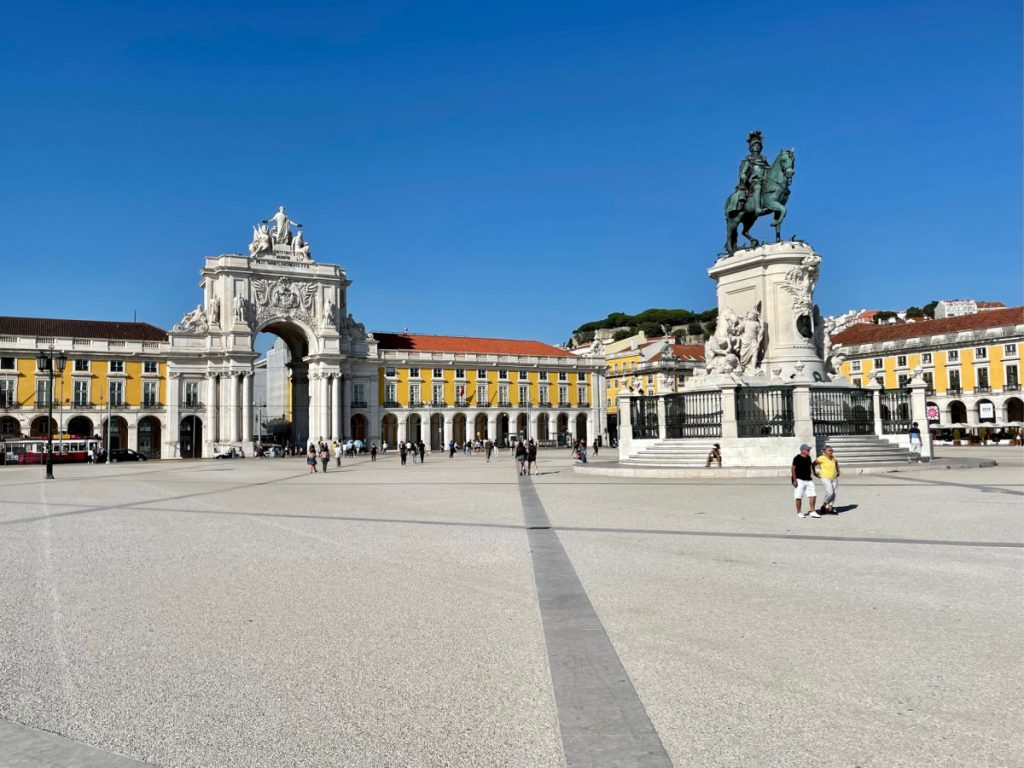
You can start your trip in either Porto or Lisbon, but I like starting in Lisbon because there is just so much to do here that I wouldn’t want to save it until the end when you are getting tired. If you are flying in from the United States, you will likely land early in the morning. A good way to overcome jet lag on your first day is with a quick overview tour of the city. You could sign up for a free walking tour, but since you will be tired, the best way is either a sidecar tour or a tuk-tuk tour.
The tour will start to get you acquainted with the city, and you can identify some of the best places that you will want to return to later on your own. Another option would be to use the historic Tram 28 as a fun way to see the city, but these tend to get really crowded so you might have a hard time getting a spot on board. Plus you won’t get the personal attention and history that you will get on a private tour.
A few sites that you want to make sure to visit over the next few days include the following. If you have the energy, walk to a few of these on the first day and save the rest for later. For more details, be sure to check out my 3 days in Lisbon itinerary.
Also, when you are in crowded areas, be sure to watch out for pickpockets and keep your valuables in theft-proof bags or wallets. You will also need some proper walking shoes for the hills and the slippery tile walkways.
- Rossio Square (black and white tiled square)
- Elevador da Glória (Funicular)
- Terraços do Carmo (overlook)
- Santa Justa Lift (elevator)
- Miradouro de São Pedro de Alcântara (overlook)
- Bairro Alto district (restaurants & bars)
- Commerce Square (Praça do Comércio)
- Rua Augusta Arch (you can buy a ticket to climb this too)
- Se Cathedral Lisbon
- Miradouro das Portas do Sol (overlook)
- Miradour de Santa Luzia (overlook)
- Alfama district (oldest neighborhood with narrow, winding streets)
- Miradouro de Nossa Senhora do Monte (overlook)
- São Jorge Castle (Castelo de São Jorge – Gothic architecture castle)
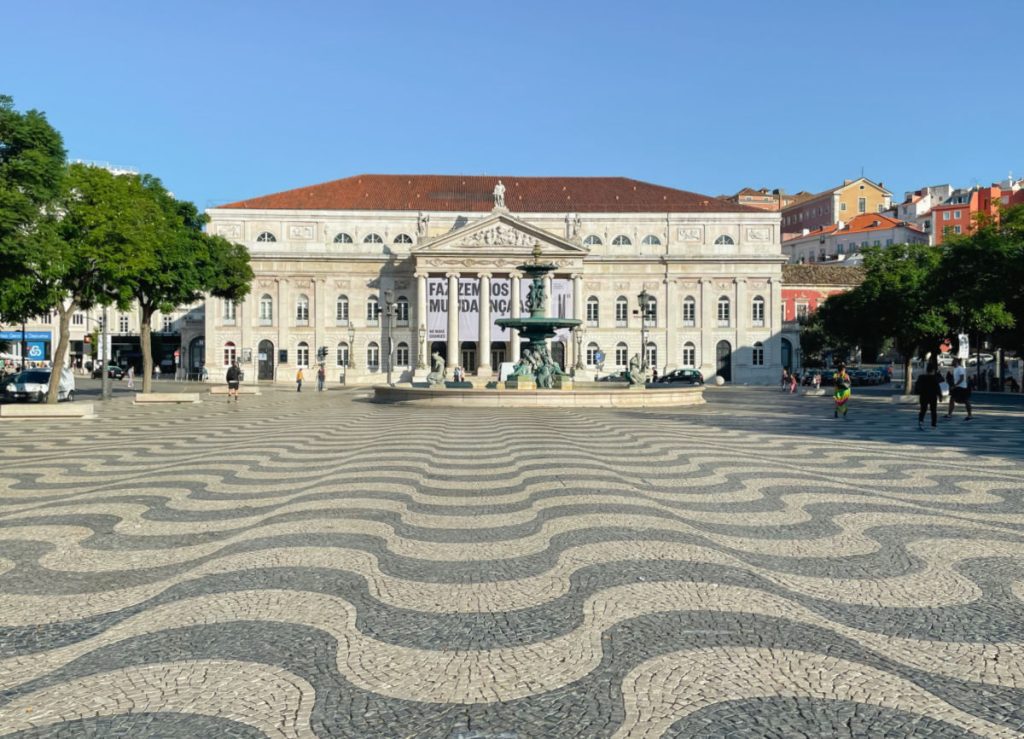
Where to stay in Lisbon
I’ve stayed in three different places in Lisbon and each would appeal to a different type of traveler. First, I would recommend staying in a central location, just keep in mind that the historic center is busy and can be quite noisy at night. The first was the Tivoli Avenida Liberdade Lisboa, which is a luxury hotel on the tree-lined Avenida da Liberdade. While it is quiet just on the outskirts of the city center, it is also a short walking distance to get to the heart of the action. The rooms are spacious, the service top-notch, and there is a lovely rooftop bar and restaurant.
The next place, Martinhal Lisbon Chiado, is perfect for families. These suites offer plenty of space and everything you would need when traveling with kids — from step stools in the bathroom or kid-friendly utensils in the kitchen. See my full review of family hotels in Portugal.
The last was Baixa House, which has a set of luxury apartments in an 18th-century building in the heart of the historic city center. These are perfect for families, couples, or friend groups that want to be centrally located, with self-catering options and a stylish “local living” feel. Just keep in mind that this area can get noisy.
Day 2: Lisbon & Belem
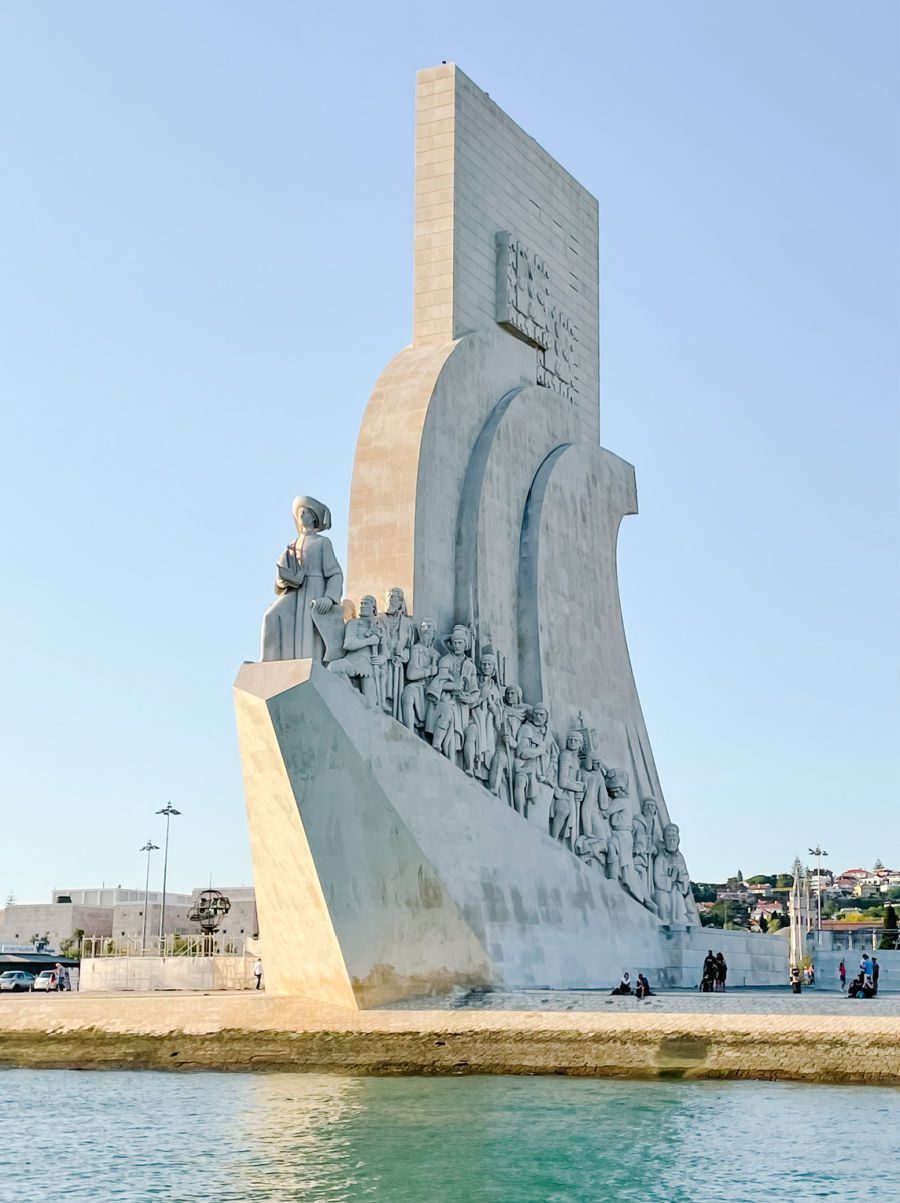
On your second day in Lisbon, you will want to hit the ground early, as there is much to explore! Start off with a trip out to Belem (you can take a tram or train, but an Uber isn’t that much more and cheaper if you have a few people.) In Belem, there are a few major attractions you don’t want to miss.
- Jerónimos Monastery — the line can be very long so buy your ticket in advance and go early
- Belém Tower — you can see this 15th century tower from the outside, or, when it is open buy a ticket to climb up to the roof terrace
- Monument to the Discoveries (Padrão dos Descobrimentos)
- Pastēis de Belēm — line up to purchase these famous custard tarts, some claim these are the best
Once you have seen these main attractions, if you have more time, you can also check out the MAAT (Museum of Art, Architecture, and Technology.) Also note that if you are going to visit quite a few of these attractions, you may want to look into purchasing the Lisbon Card.
If you can squeeze all that into your morning, I would recommend heading over to Time Out Market in Lisbon for lunch. Stroll through this food hall and market and sample small plates from a range of vendors. You may also want to taste the pastel de nata from Manteigaria and see which you like better.
In the afternoon, take some time to get lost in the Alfama district. Try some of the local Ginjinha cherry liqueur and check out the street art. If you have time, pay a visit to the Fado Museum or the Museu Nacional do Azulejo (National Tile Museum.)
In the evening, take a sunset sail on the Tagus River. You will sail from the docks and go under the 25 de Abril Bridge to Belem. On the return trip, you will have great views of the Sanctuary of Christ the King statue, which is a smaller version of the Christ the Redeemer statue in Rio de Janeiro. For a special splurge, treat yourself to a private sailing with Lisbon ByBoat.
At night, make sure you take in a fado show. There are many places in the Alfama neighborhood famous for this soulful song and guitar performance, but you can also book a reservation at O Faia (Rua Barroca 56) in Bairro Alto, just be prepared to pay the minimum cover charge for your meal and drinks.
Day 3: Sintra
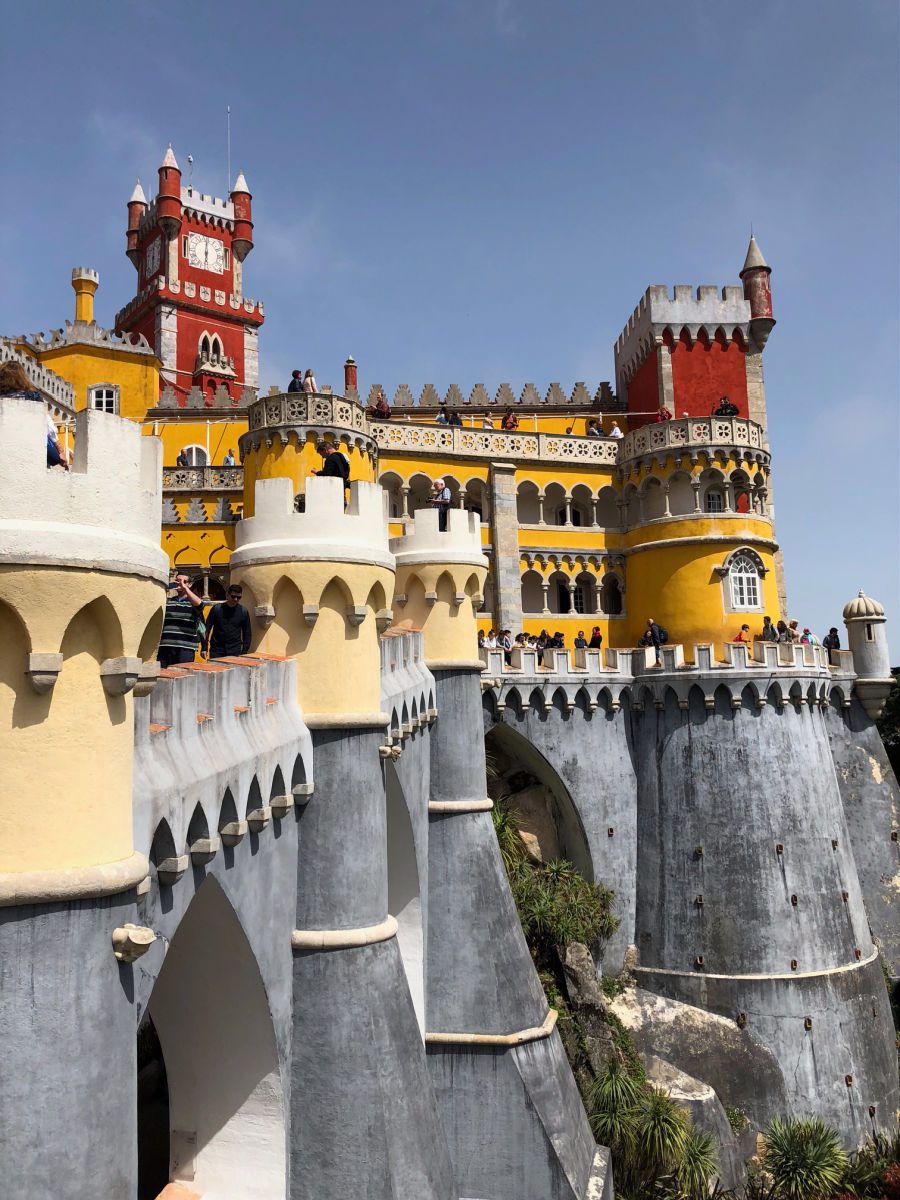
Located just 30 minutes from Lisbon by train, a day trip to Sintra is a must when you visit Lisbon! Sintra has been a summer retreat for monarchs and today Sintra is a protected UNESCO World Heritage Site. Set on a hilltop, it is easiest to either take the train into Sintra or hire a driver for the day because parking in town is crazy. If you take the train, you can then take a bus to the various attractions.
A few “must-see” stops in Sintra include:
- Peña Palace and Park — you can select to visit either the Palace and the Park, or just purchase a ticket to the park. The Palace ticket will get you into the interior, to view the royal rooms. To be honest, unless you have a particular interest in castles and palaces, you will be just as well off just visiting the Park and enjoying the panoramic views from the Palace grounds. Even the park entrance gets you into the ground of the castle. To visit the main Palace area, you will need at least an hour, more if you are going inside. But you will also want to leave time to walk through park, with its winding paths, pavilions and stone benches. Much of this is behind the palace and could take you half a day or more to fully explore.
- Quinta da Regaleira — make your next stop this residence and park that was built at the end of the 19th century and blends romanticism and fantasy in a parklike paradise that kids will absolutely go crazy over. Plan on spending a half a day here if you can (there is a cafe onsite.) The gardens are full of secret tunnels and passageways, grottos and towers and the things that make your imagination come alive. One thing that can’t be missed is the Initiation Well (Poço Imperfeito) and Lago da Cascata.
- Palacio de Setais — is a five-minute walk from Quinta da Regaleira and worthy of a stop. If for nothing else, you should get a photo here with a view across the valley below.
- Castelo dos Mouros — climb along the ancient walls of this Moorish castle.
Day 4: Cascais or Quinta de Sant’Ana
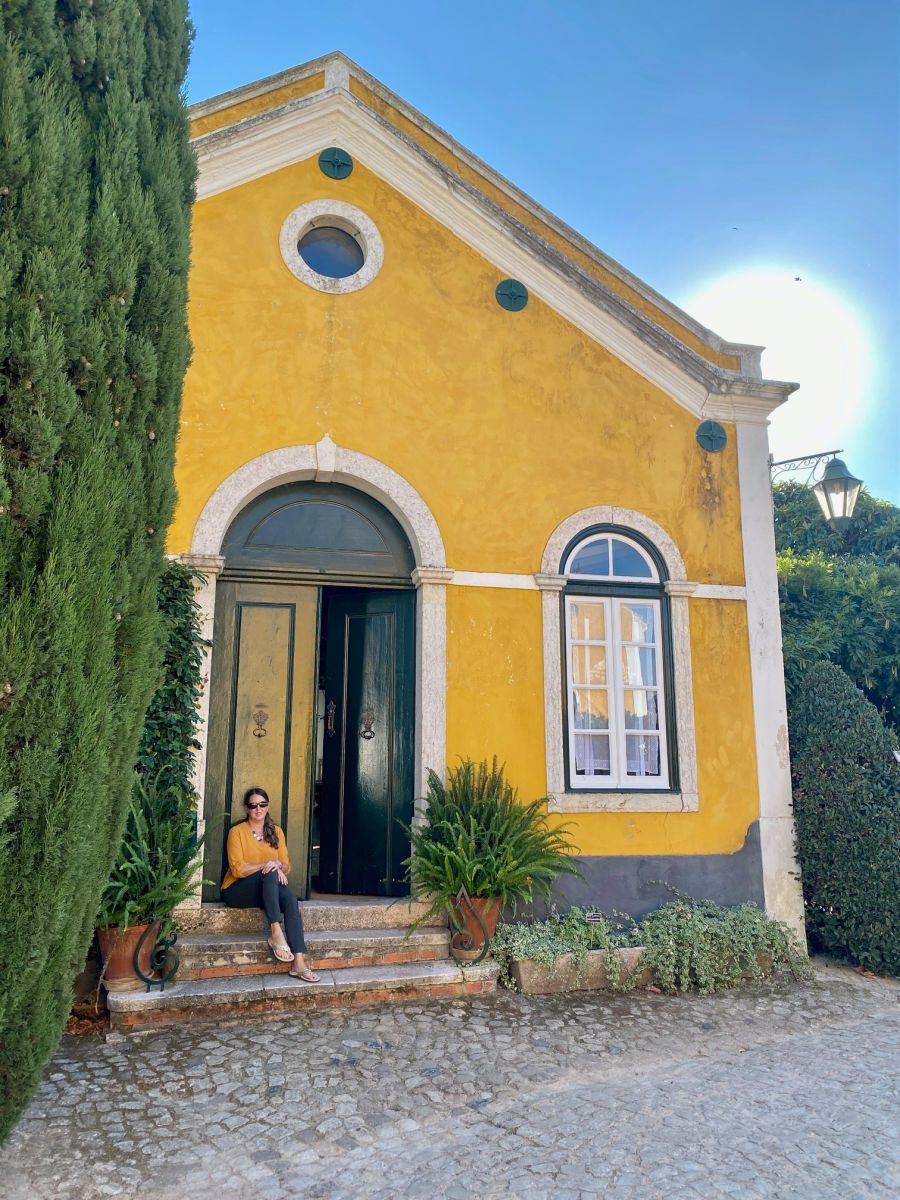
If you have time for a fourth day in Lisbon, I’d recommend either spending time exploring Lisbon or taking another day trip. If you want to just relax, enjoy more time strolling the small streets, historic sites, and boutiques in Lisbon. Otherwise, I’d recommend taking a food tour with Devour Tours. If you want to learn a little more about Lisbon’s historical landmarks, take a walking tour with Inside Lisbon.
However, this is also a great opportunity for another day trip. In warm weather, a popular spot is Cascais. This seaside holiday town has a beach, walking or bike paths along the coast, and a charming downtown with tourist shops, restaurants, and bars. A fun spot for sundowners is the rooftop at Cafe Galeria House of Wonders. You could also visit Praia das Maçãs (Apple Beach), another popular beach, but it is a little further north than Cascais and puts you a bit further away from Lisbon.
If you prefer something a bit more culturally immersive, plan a visit to Quinta de Sant’Ana. This family wine estate is a popular wedding venue, but they also offer special experiences like wine tasting, vineyard tours, Portuguese bread making, and even a flower arranging workshop using clippings from the farm’s own flower fields.
Day 5: Douro River Valley
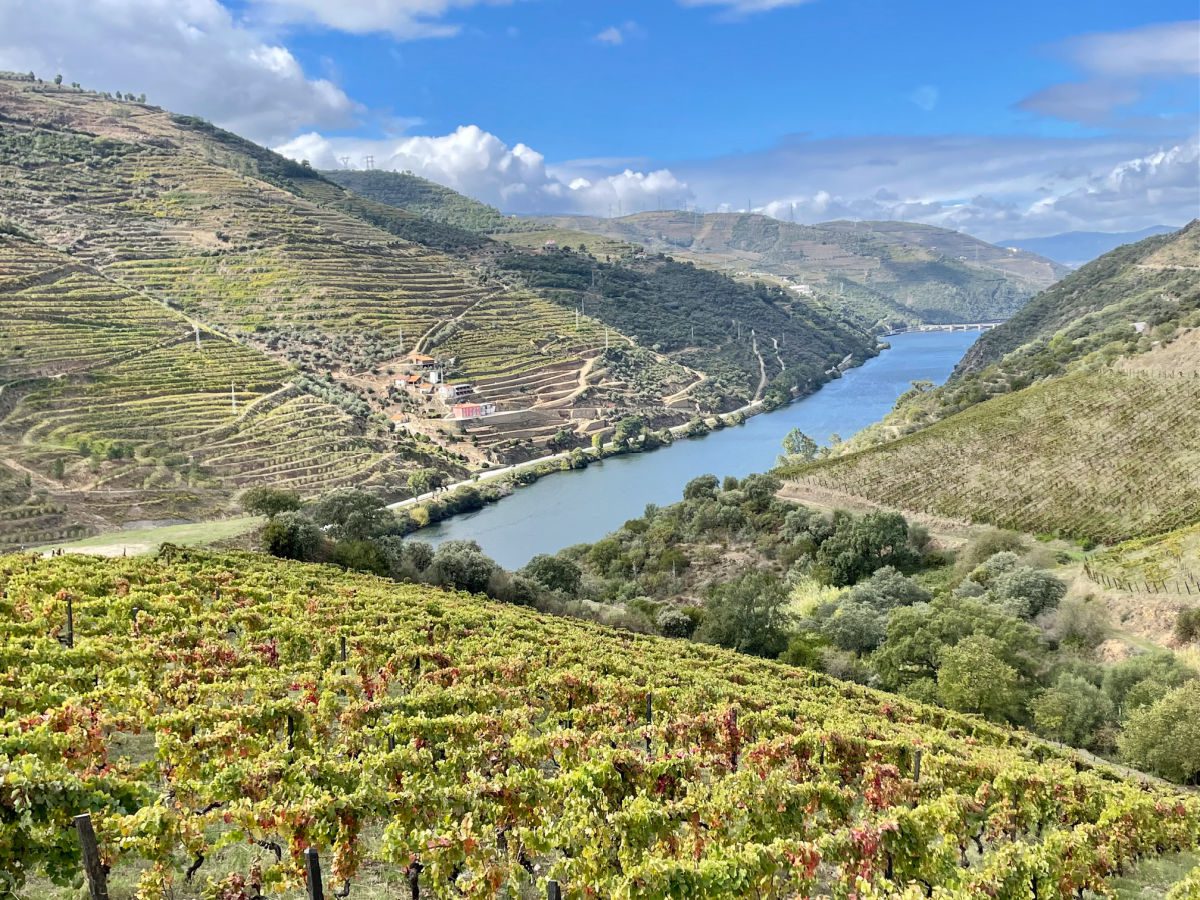
The long drive from Lisbon to the Douro River Valley in Northern Portugal takes about four hours. You can always break up your trip with stops in Nazaré, famous for its surfing beach, or Coimbra, a university town and one of Portugal’s largest cities. However, I’d recommend trying to drive right through and enjoy a lovely lunch overlooking the terraced vineyards of the Douro River Valley.
I’d recommend either DOC, from Chef Rui Paula, in Folgasa, or Cantina de Ventozelo in Ervedosa do Douro for lunch. Afterward, enjoy a scenic boat trip along the Douro River on one of the traditional boats that was used to transport Port barrels downriver to Porto. A great spot for this is in the town of Pinhão.
Where to Stay in Douro
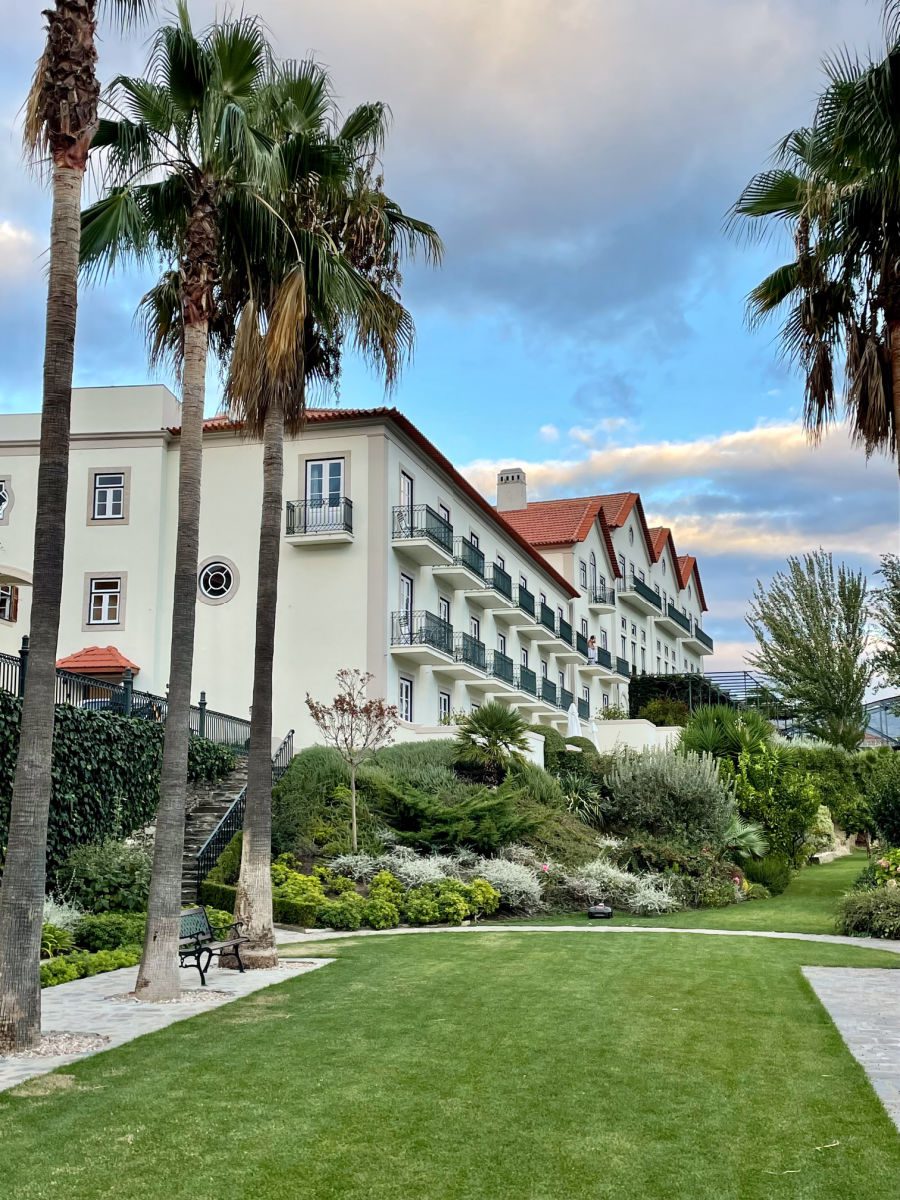
If you take the train, Pinhão is a good spot to make your home base. The Vintage House has a prime location on the river, with a full-service restaurant, wine workshops, tennis courts, and a pool.
If you are driving a rental car or have a driver, and you have the budget, you can’t beat a stay at the Six Senses Douro Valley. This centrally-located luxury hotel has plenty of activities and amenities on the property if you can relax and enjoy your stay. I’ve also written about other options for where to stay in the Douro Valley.
Day 6: Douro River Valley
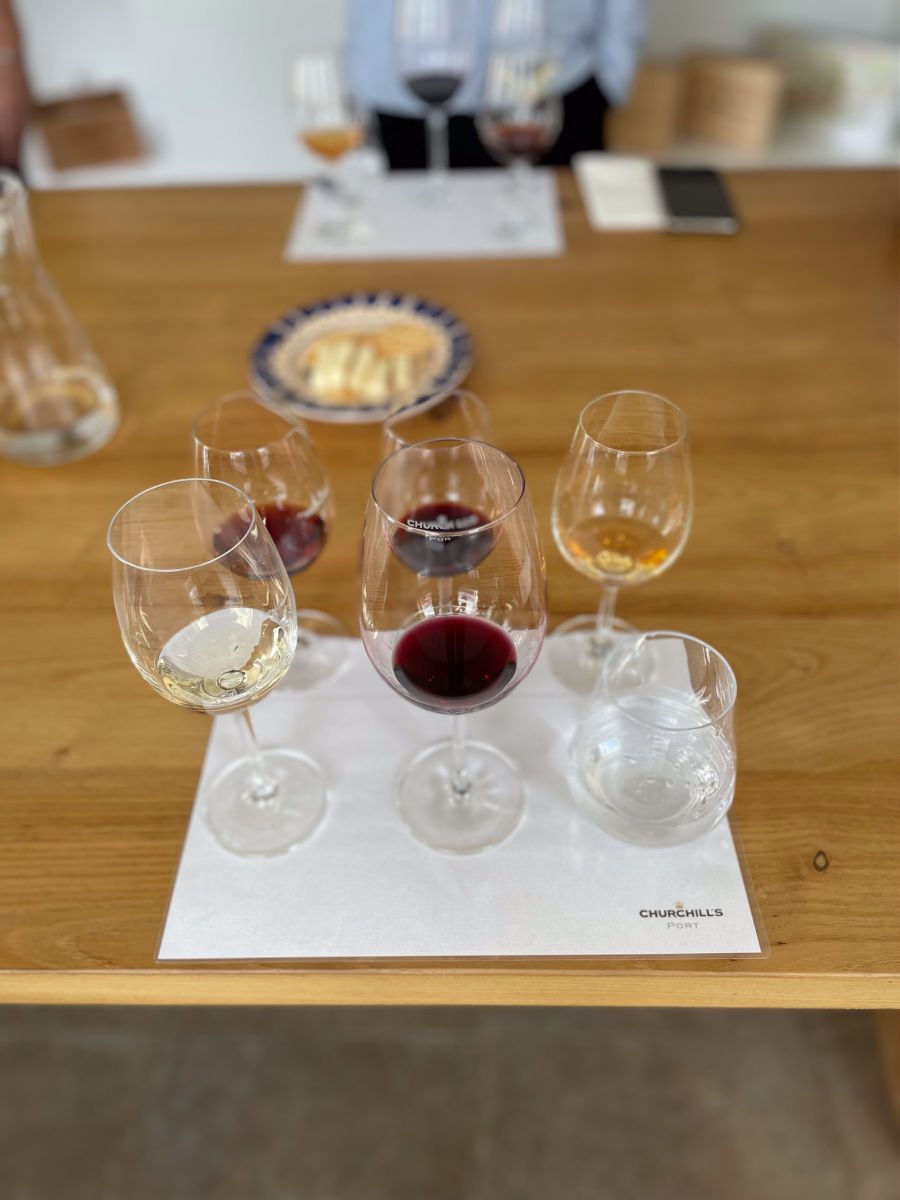
Take a full day to enjoy the gorgeous landscape and wineries of the Douro River Valley. Keep in mind that you need appointments to go wine tasting at the Quintas. Navigating the narrow roads along the river and up into the hills can be challenging when you are sober, so it is highly recommended that you take a wine tour or hire a driver for a day tour.
We loved our day exploring with Lab Portugal Tours. Our driver and guide Miguel arranged three tastings and lunch for us, giving us a chance to sample all varieties of Port and table wine. At the end of the day, you can enjoy some activities or relaxation at your hotel.
Day 7: Porto
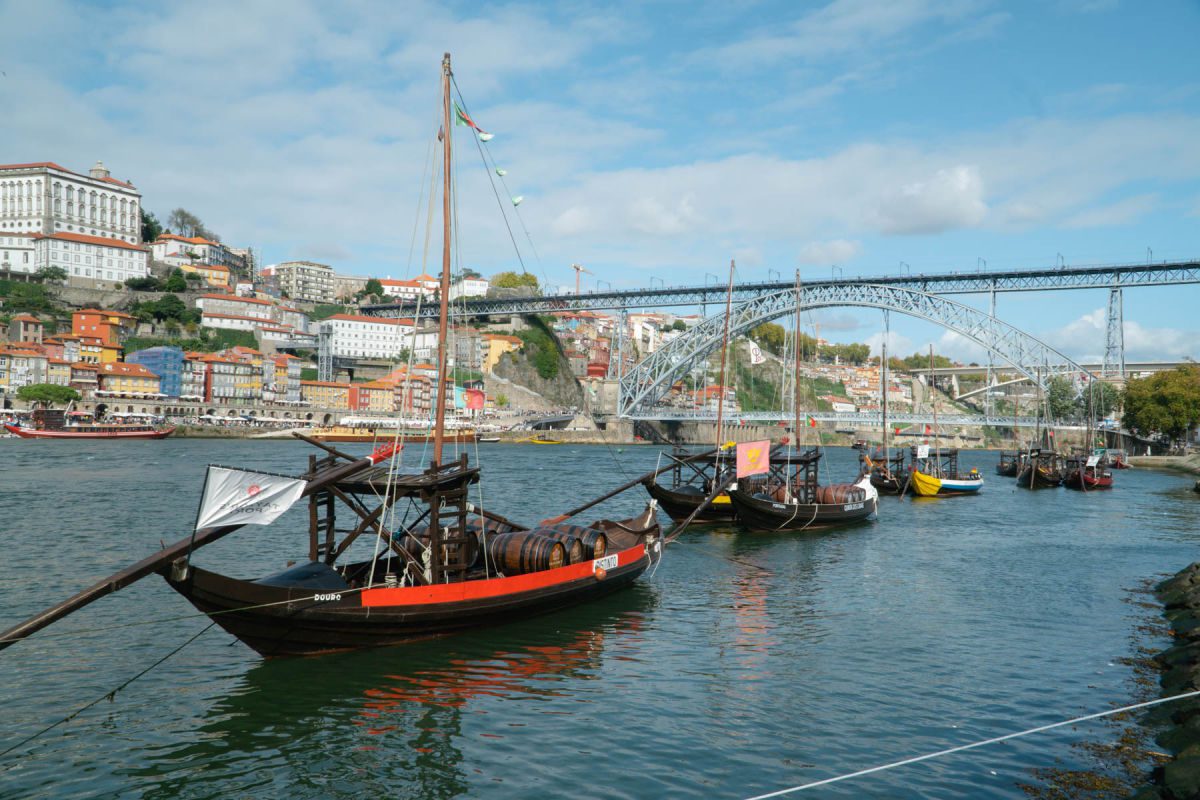
The drive from the Douro Valley to Porto takes about an hour and a half, leaving you plenty of time to enjoy Porto. After you arrive, I’d recommend you head across the river to Gaia (Vila Nova de Gaia), which is actually its own city but it feels a lot like Budapest with Buda and Pest divided by the river.
In Gaia, you will want to visit one of the Port houses for a tour and Port wine tastings, such as Taylor’s, Churchill’s, Sandeman, or Calem. Right next door to Taylor’s is the fabulous WOW (World of Wine) entertainment district. WOW is home to seven different museum experiences and twelve restaurants in one large entertainment complex. One of these experiences is The Chocolate Story, which covers the history of chocolate and explains the details of the cacao harvesting and chocolate-making process. Here you can arrange a Port and chocolate pairing workshop.
At WOW you can also visit the Pink Palace, which immerses visitors in the world of rosé wine or learn more about Porto history at the Porto Region Across the Ages museum. Plan to have dinner at one of WOW’s many restaurants, like the Golden Catch Fish Restaurant or PIP, the family-friendly restaurant.
Where to Stay in Porto
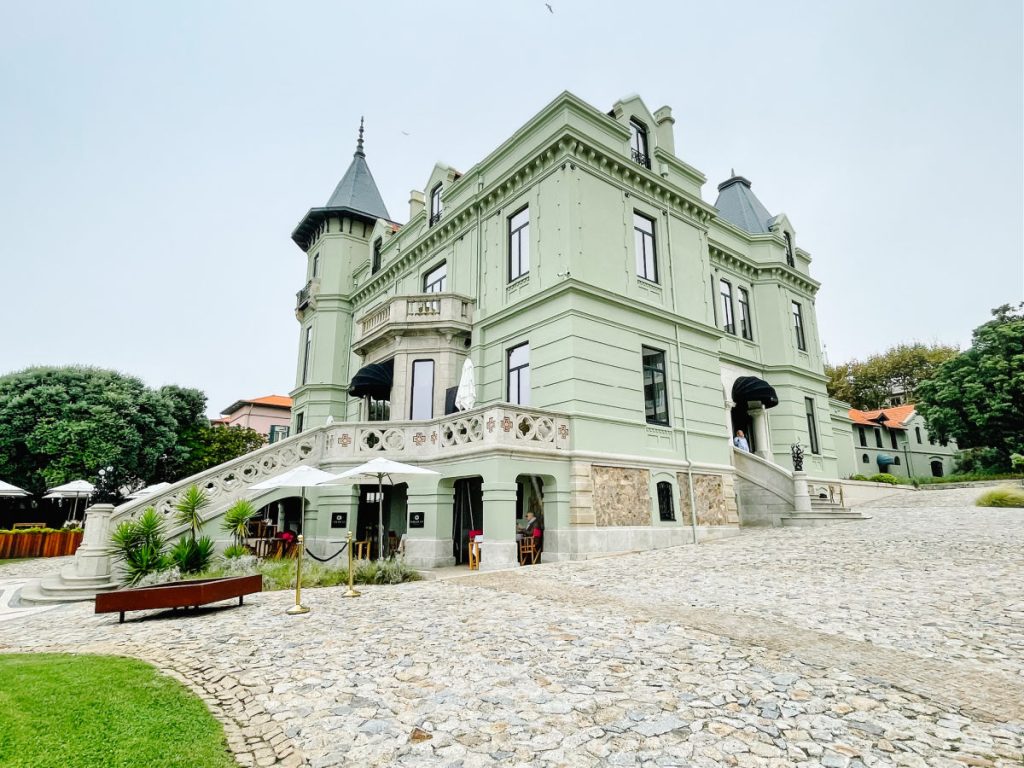
If you want to be close to the action in the city center, you may want to look at Gran Cruz House right on the river, Canto de Luz in the center of town, or the Myo Design House, which was owned and refurbished by an architect. Personally, I loved our stay at the Vila Foz Hotel & Spa.
While Vila Foz is outside of the city center, it has a lovely location across from the ocean and they offer transportation to downtown (or you could hop on a tram.) This luxury, boutique property offers top-notch guest service, gourmet dining, a relaxing spa, and modern design rooms or more traditional decor in the manor house.
Day 8: Porto
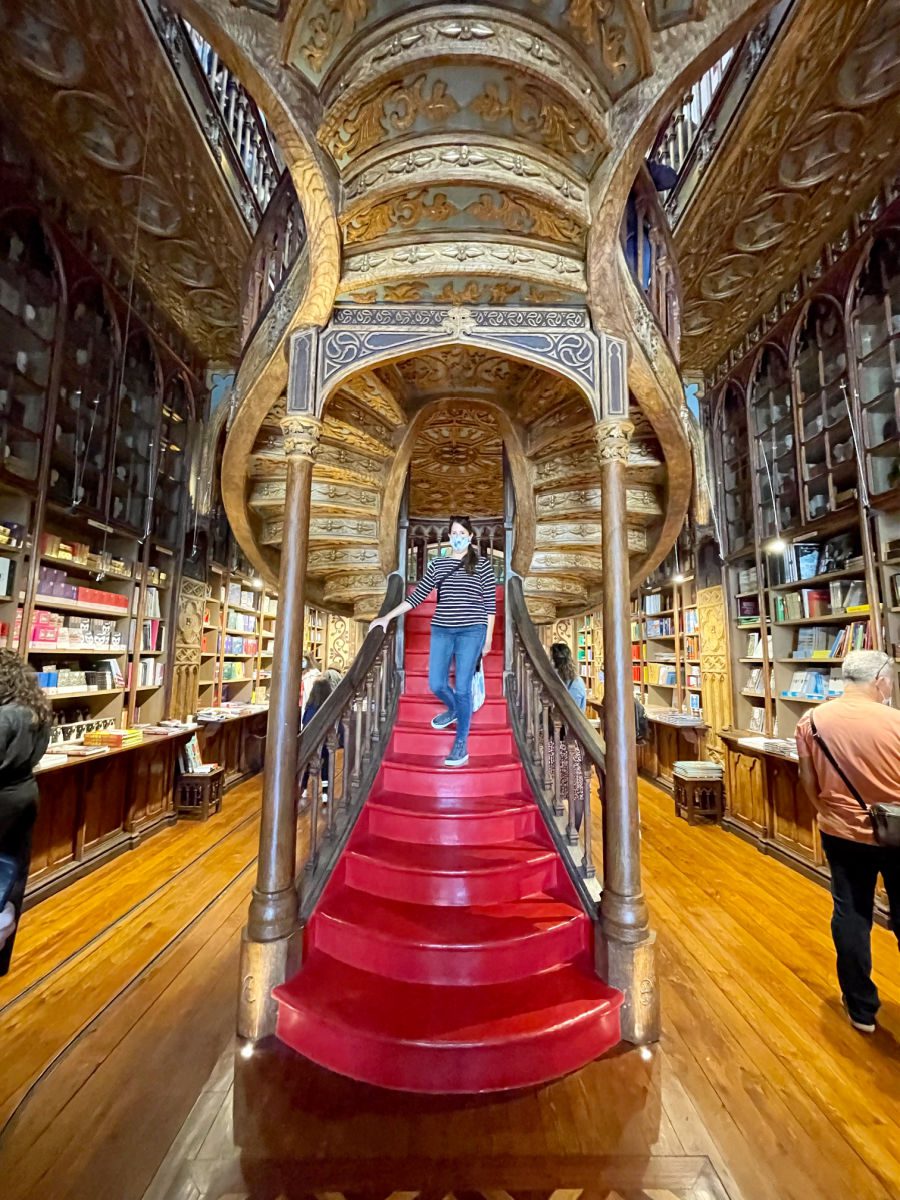
Take your last full day in Porto to explore. I’d recommend taking a guided walking tour with Explore Sideways, but if you want to do a self-guided tour, see my guide to Porto. Some of the must-see sights include:
- Igreja de São Francisco (Church of St. Francisco) — famous for its gold-dust interior and the crypts
- Igreja do Carmo — check out the blue and white tiles on the side of the church
- Clérigos Tower — the Clérgios church and its tower is one of the most recognizable monuments in Porto. It was built between 1735 and 1748 in a baroque style. Today, you can visit the church (for free) and the tower (for a fee). For a great view of Porto, climb the 200+ steps of the tower and see its 49 bells.
- Livraria Lello bookstore — buy tickets in advance and skip the line. Harry Potter fans won’t want to miss this fantastical bookstore. While it is rumored to be J.K. Rowling’s inspiration for the dramatic staircases in the Harry Potter books and movies, Rowling never actually visited the shop, despite living in Porto for a while.
- São Bento train station – step inside to see some of the gorgeous tile murals that tell the story of Porto
- Porto Cathedral — see amazing views of the city from this perch
- Ribeira Square and the waterfront
- Dom Luís I Bridge — connects downtown historic Porto with Vila Nova de Gaia and offers beautiful views of the city and up and down the Douro River
You may want to end your day with a river cruise to see the six bridges that connect Porto.
For dinner, make sure you sample one of Porto’s most famous sandwiches, the francesinha. The Francesinha sandwich was created in Porto at A Regaleira and is a Portuguese take on the French Croque monsieur. You will see it advertised all over Porto, but A Regaleira serves up the original.
Day 9: Fly Home
If you left on a Friday night and stayed in Portugal from Saturday to Saturday, you can fly home on Sunday and still only take one week of paid time off for your vacation. If you do have extra time, you can start in Porto and then tack on a few days in the Algarve, Comporta, or Alentejo at the end of your stay to create a 10-day Portugal itinerary.
Portugal Itinerary #2: Lisbon and Alentejo
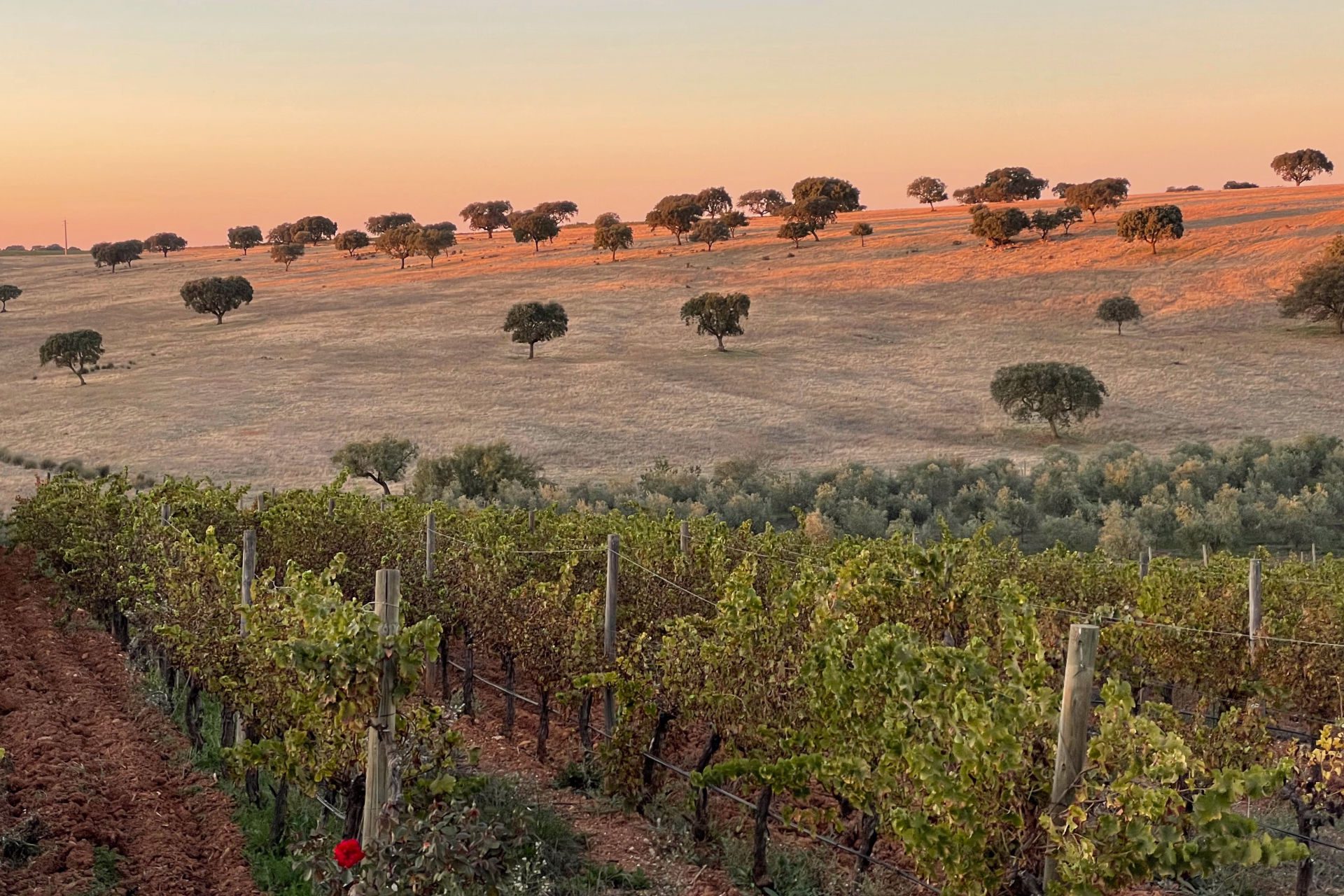
If you have never heard of the Alentejo region of Portugal, you are not alone. This under-the-radar destination is the Tuscany of Portugal. Comprising one-third of the country, this arid landscape of rolling hills, cork trees, and vineyards is the breadbasket of Portugal. You will find remnants of Ancient Roman ruins, fortified medieval towns and castles, and large wine estates.
With all the wide-open spaces, this is a great region for a Portugal road trip that would appeal to history buffs, wine enthusiasts, families, and adventurous travelers looking to connect with the land, the people, and agriculture. Given the size of the region, it can be tempting to divide your stay into two different places. However, where you stay depends on how much time you want to spend driving between accommodations and how many times you want to move in a short one-week vacation.
Personally, I would recommend spending three nights in Lisbon and four nights in Alentejo of the perfect amount of time. I would pick a central location near Evora or Monsaraz and give myself more time to relax on the property and take a couple of day trips from there.
| Day | Highlights | Stay |
| 1 | Lisbon city highlights tour | Lisbon |
| 2 | Belem, Alfama, and sunset sail on the Tagus River | Lisbon |
| 3 | Day trip to Sintra (Optional extra day in Lisbon: food tour or day trip to Cascais) | Lisbon |
| 4 | Visit Evora | Alentejo |
| 5 | Hot air balloon, picnic, horseback riding, pool, or wine tasting | Alentejo |
| 6 | Cork trekking, star gazing | Alentejo |
| 7 | Monsaraz or Estremoz | Alentejo |
When to Go
The thing to keep in mind about Alentejo is that it is dry and can be very hot in the summer, with temperatures in excess of 100 degrees Fahrenheit. If you want to do a Lisbon and Alentejo Portugal itinerary, it would be best to plan it during May-June or September-October. April and November can tend to be rainy in Alentejo and some properties close or have more limited amenities in the winter. I visited in October and the weather was still warm enough to want to enjoy an afternoon or two by the swimming pool.
How to Get There
Plan to fly in and out of Lisbon, as described above. Then, when you are ready to leave Lisbon, rent a car for your drive to Alentejo. While many activities can be enjoyed on the property at many of the hotels, you will want a car if you want to explore the countryside and the medieval towns. When traveling in Europe, I usually use Auto Europe to find the best rates and coverage for rental cars.
Days 1-3: Lisbon
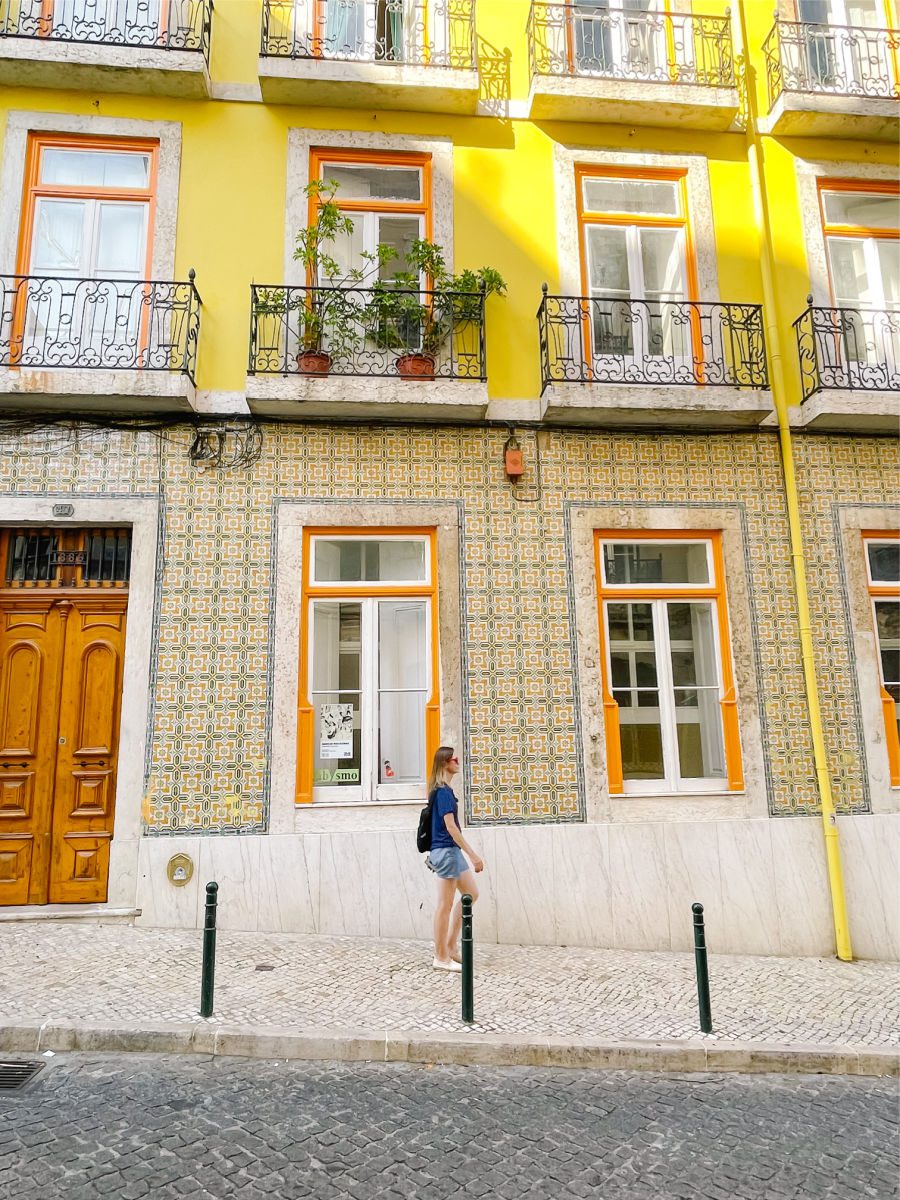
I would suggest starting your trip in Lisbon so that you can relax and enjoy your downtime after some busy city exploration. Follow the suggested Lisbon itinerary from above.
Days 4: Evora
On the fourth day of your Portugal itinerary, I recommend heading east to Alentejo. It takes about an hour and a half to drive from Lisbon to the popular city of Evora. Evora has become a popular day trip from Lisbon, but you can spend a little more time if you are actually staying in Alentejo.
A few of the “must-see” sights in Evora are:
- Bone Chapel Of The Church Of St. Francis (Capela dos Ossos) — The Bone Chapel of Evora was built by a monk during the 16th-century church with a goal of encouraging people to reflect on the transitory nature of life. The chapel is constructed using the bones of approximately 5,000 bodies exhumed from the city’s graveyards. Quite macabre, but a popular attraction none-the-less.
- The Roman Temple of Diana — Built in the 2nd or 3rd century, this temple is still in good condition, with 14 surviving columns topped by Corinthian capitals on a granite base.
- Evora Cathedral (Se) — there are many churches to see in Evora, but if you only have time for one you should check out the cathedral near the Temple of Diana. The inside is more impressive of the outside, featuring an 18th-century high altar and polished marble chancel. The treasury houses many sacred artifacts, including rare and priceless pieces made of gold, silver, and other precious metals.
- Aquaduct of Silver Water — completed in 1530 and designed by Francisco de Arruda (who designed the Tower of Belem), stop to see this impressive aquaduct on your way in or out of town.
After visiting Evora, continue on to your accommodation. I would recommend São Lourenço do Barrocal if your budget allows, but I have visited four hotels in Alentejo and truly loved all of them.
Where to Stay in Alentejo
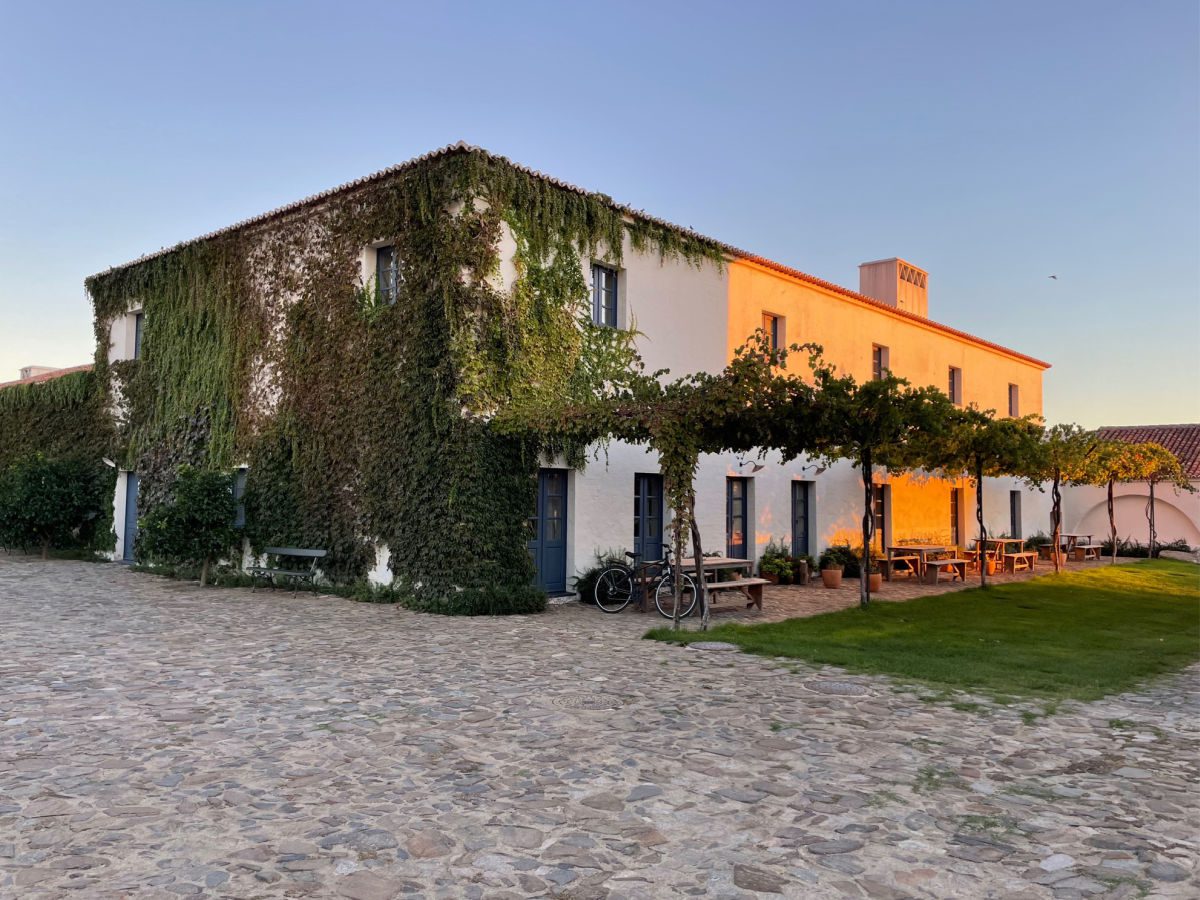
- Torre de Palma — near the village of Vaiamonte, the historic Torre de Palma Wine Hotel dates back 1338. Restored in 2014, the Torre de Palma offers a range of unique and individually decorated rooms and suites. On property, you can relax at the pool, walk through the vineyards, or enjoy either a horse-drawn carriage ride or horseback riding. Torre de Palma also has an impressive wine tasting room and winemaking operation, offering tours, tastings, and wine blending classes.
- Octant Hotel Evora — this hotel offers 56 rooms and five villas, all of which have an open-air balconies or terraces and the villas have a balcony and private pool. Some rooms are even outfitted with family-friendly bunkbeds in addition to the double bed.
- São Lourenço do Barrocal — São Lourenço do Barrocal has earned the Conde Nast Traveler Reader’s Award for Top Hotel in Spain and Portugal for 2021 and it is easy to see why. On property, guests can enjoy estate tours, wine tasting, horseback riding, birding, archeological visits, garden visits, and family-friendly treasure hunts. In addition to relaxing at the spa or outdoor pools, the hotel can also arrange hot air balloon rides, star gazing experiences with an astronomer, sky diving, boat tours, and more.
- Herdade da Malhadinha Nova — This Relais & Chateaux property is unlike other wine hotels in Portugal. Spread out between six uniquely different buildings on this 450-hectare wine estate, Herdade da Malhadinha Nova blends into the magnificent landscape, offering authenticity with high-touch service and luxurious surroundings. Daily activities can include: archery, quad bike rides, horseback riding, fishing, running and workout classes, hikes, tennis, mountain biking, guided walks, wine tasting courses, cooking workshops, family treasure hunts, painting, jeep tours, carriage rides, riding lessons, star gazing, pottery, canoeing, bird watching, hot air balloon rides, gourmet picnics, and so much more.
See reviews of these wine hotels in Portugal and more.
Day 5: Relaxation
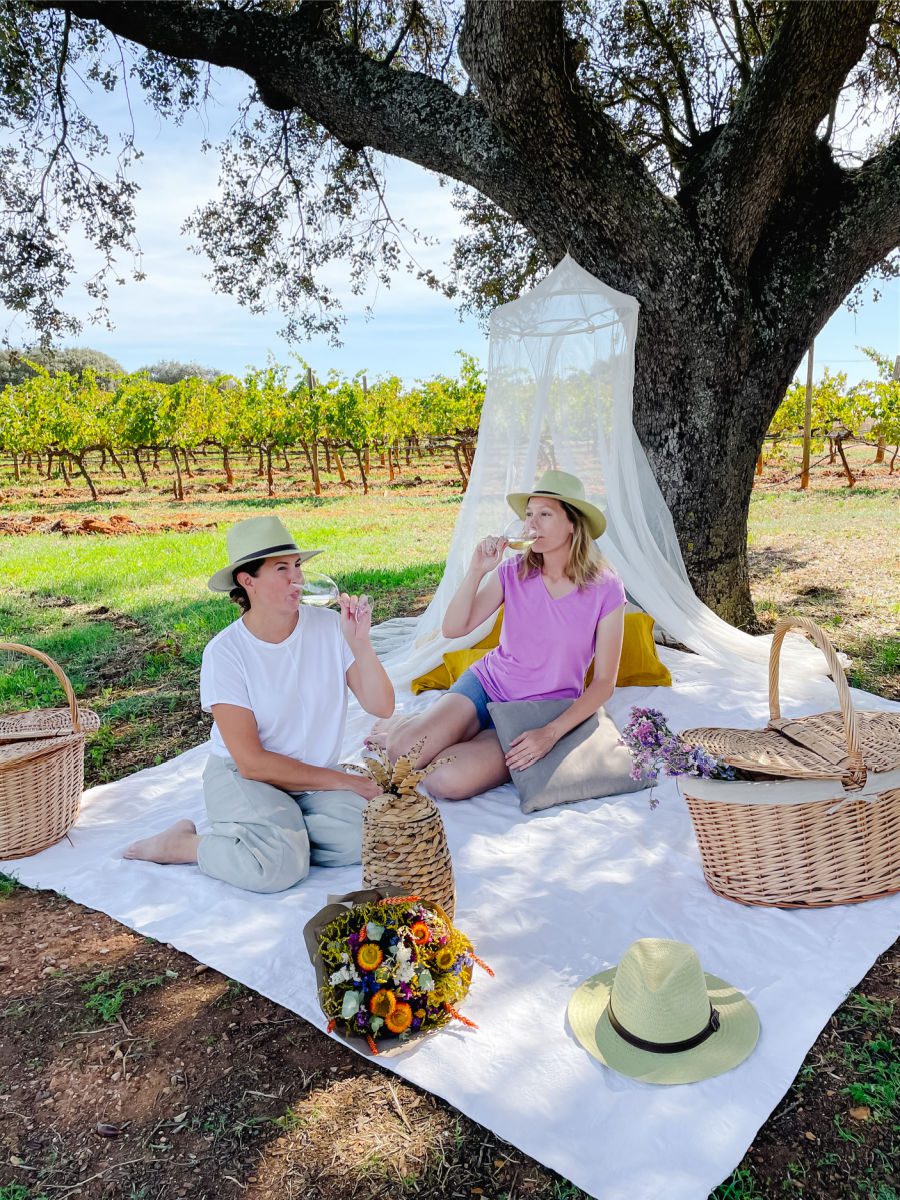
After a busy few days, you will appreciate the opportunity to relax. Many of the hotels in this area offer a range of on-site properties. I’d suggest starting your stay off on a high note by pre-arranging a hot air balloon ride over Alentejo. Granted, it makes for an early morning (not as bad in the fall as it is in the summer), but the views can be spectacular. Just keep in mind that wind or weather conditions can cause the excursion to get canceled (this is what happened to us but luckily I’ve gone hot-air ballooning before in Ronda, Spain, not too far away.) That is why you want to plan this early in your stay so you have a chance to reschedule if the weather improves.
After an early morning start, you will want to enjoy a leisurely breakfast and some of that delicious Portuguese orange juice, honey, and pastries. This may also be a good day to sit by the pool, enjoy a traditional Alentejo picnic, or a relaxing horseback or carriage ride.
End your day with a personalized wine tasting, winery tour, or wine pairing workshop before enjoying some of the gourmet dining on the property.
Day 6: Redondo
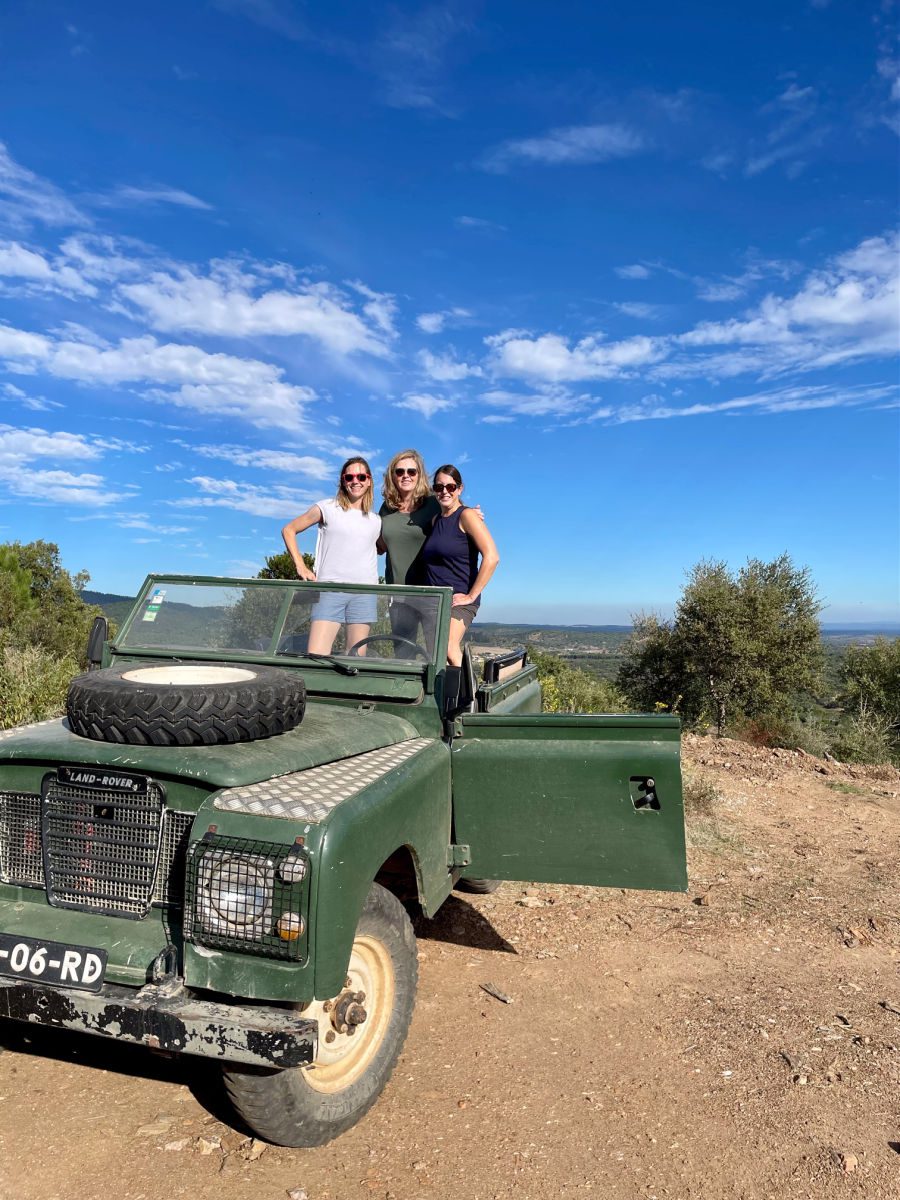
A great way to connect with the local culture is to spend a day on a cork farm with Cork Trekking. You will take a 4×4 safari through the farm property and learn more about one of Portugal’s most popular products. You will see cork trees and learn how cork is harvested. Cork is actually a type of oak tree and trees need to be at least 25 years old before they can harvest cork (although some wait up to 40 years). The bark is carefully shorn from the trunk and lower limbs and then farmers wait at least nine to eleven years between harvests.
A cork trekking expedition will include a walk through the trees, along with a 4×4 ride up to a stunning viewpoint overlooking Alentejo. You can also include a picnic lunch and a wine tasting from the farm’s award-winning winery. This is truly a unique experience that you can’t do anywhere else!
Finish your day with a late-night stargazing session. Your hotel can probably arrange a private stargazing session with an astronomer, but if that isn’t in the budget, all you really need to do is walk outside and on a clear night, you can see the Milky Way with your bare eye. There are also two observatories nearby, the Observatorio Dark Sky Alqueva and the Observatorio Lago Alqueva.
Day 7: Monsaraz & Estremoz
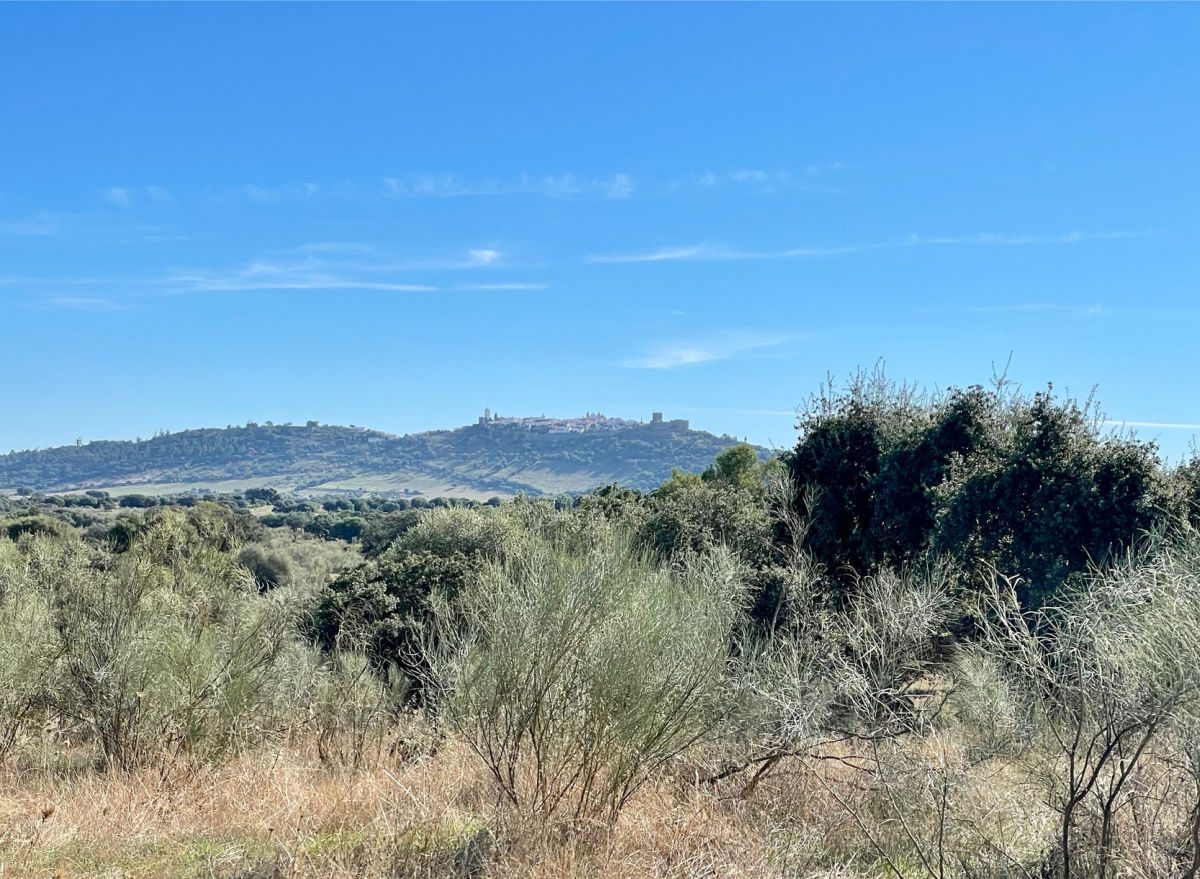
On your last full day in Alentejo, you may want to take some more time to explore. Start off with a hike to the nearby Roman Ruins or Megoliths (if you are staying at Torre de Palma or São Lourenço do Barrocal.)
Then set out to explore the nearby walled small town of Monsaraz. This little village is totally enclosed within fortress walls and is home to a well-preserved medieval castle. Also be sure to stop in the town of Sao Pedro do Corval, which is known for its pottery and home to more than 20 artisanal pottery workshops.
Next, I would recommend getting lunch in Estremoz and taking some time to explore this sparkling white town, where many of the buildings are built using locally-quarried marble. Only Carrara in Italy exports more marble than Estremoz, and the quarries outside of town have been in use since Roman times. When I visited, we had a very nice lunch at Alecrim.
Day 8: Return home
On your final day, try to schedule a mid-day flight back home, giving you plenty of time to get back from Alentejo, return your car, and still get to the airport in time. If you can take an extra day, you can either spend more time at your hotel in Alentejo or split your stay between two hotels, so you can have some time enjoying both properties.
Another option is to come back to Lisbon, but stop for the afternoon and spend the night in Cascais. Alternatively, you could spend an extra day in Lisbon before heading to Alentejo.
Portugal Itinerary #3: Lisbon and Algarve
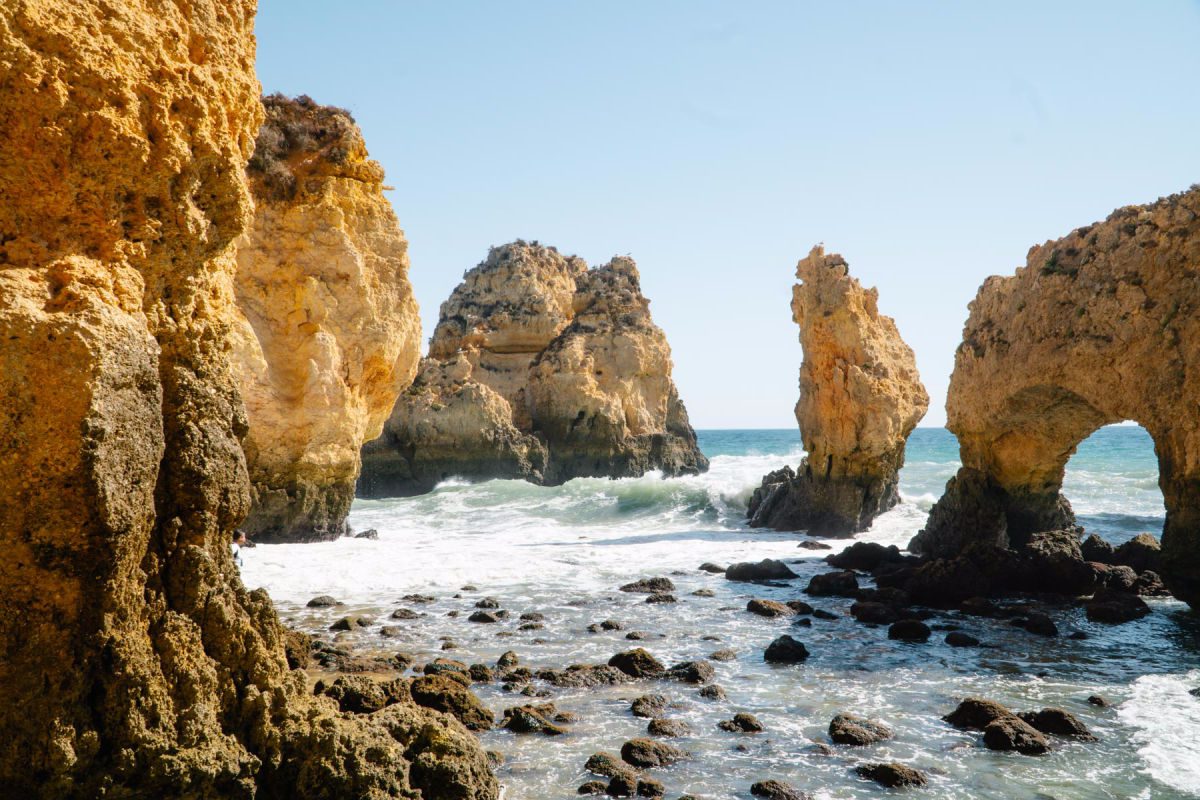
The Algarve region is one of the most popular destinations to visit in Portugal. Located along the country’s southern coast, this region is famous for its coastal towns, gorgeous cliffs, and sea caves. While many people could spend a full week in the Algarve, I would recommend spending three to four days in Lisbon and then three to four days in the Algarve.
| Day | Highlights | Stay |
| 1 | Lisbon city highlights tour | Lisbon |
| 2 | Belem, Alfama, and sunset sail on the Tagus River | Lisbon |
| 3 | Day trip to Sintra | Lisbon |
| 4 | Lisbon food tour or day trip to Quinta de Sant’Ana, Navarre, or Obidos | Lisbon |
| 5 | Sagres and Lagos | Algarve |
| 6 | Ponta da Piedade, beach and coastal cliff walk, visit towns along the coast | Algarve |
| 7 | Boat tour | Algarve |
When to Go
The Algarve is a popular destination for Portuguese, British tourists, and other travelers, especially in the summer. In fact, for some, a vacation to Portugal means a week or more spent in the Algarve. So, if you want to avoid the crowds, it is best to go in the shoulder season, from mid-April through June and September-October, although the Algarve can really be lovely year-round. Even in the winter, the Algarve coast sees temperatures from the mid-40s F to the 60s, but it will be a bit rainier from November through February.
I visited in October and found the weather absolutely perfect with sunny days for hiking the cliffs and even warm enough that I was tempted to take a dip in the Atlantic Ocean.
Getting There
It takes about three hours by car to get from Lisbon to the Algarve. If you prefer, you can take a train in about four hours, but I would recommend having a car to explore the Algarve.
Days 1-4: Lisbon
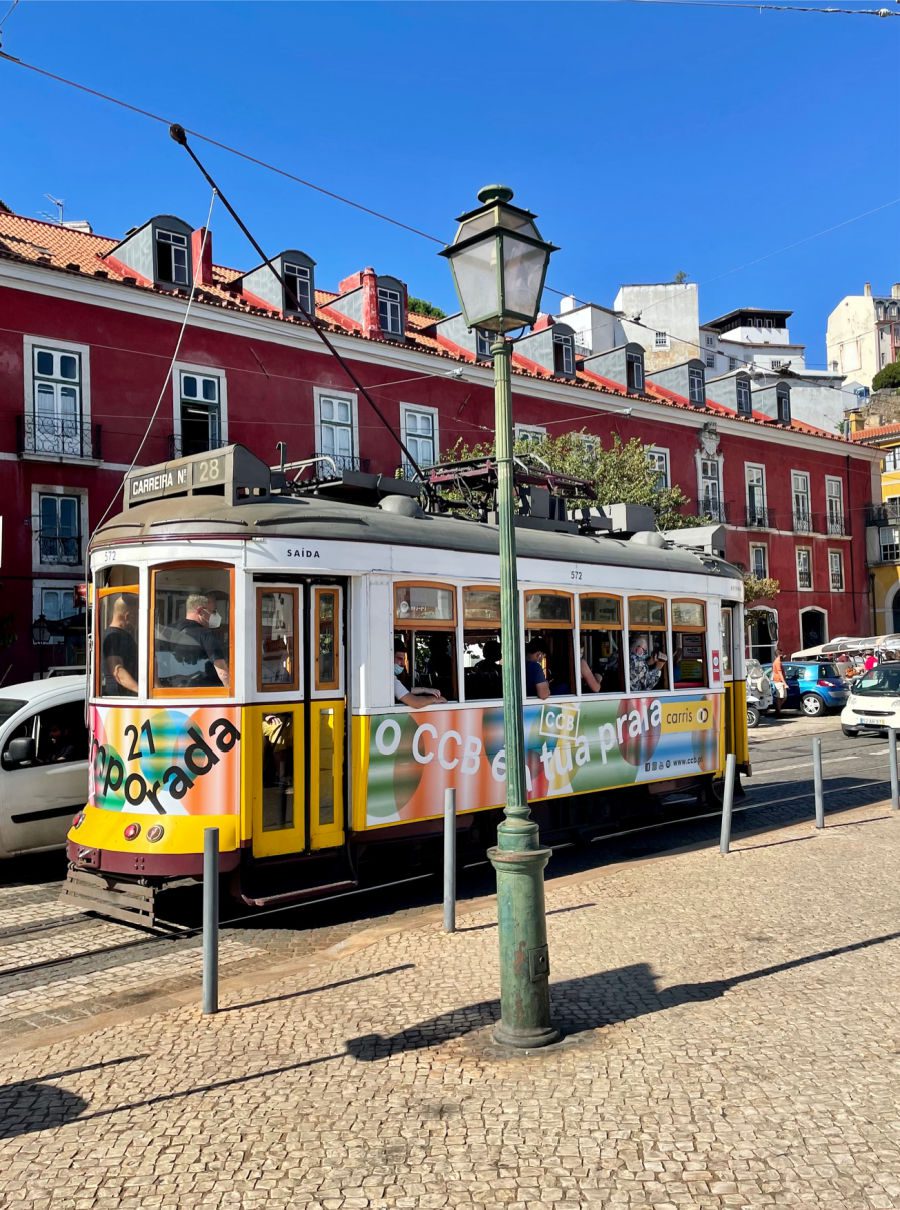
Use the itinerary above for the beginning of your stay in Portugal with a home base in Lisbon. Since you will be visiting the coast for the rest of your trip, I would skip the day trip to Cascais and spend more time in Lisbon with a food tour or history tour, visit more of the museums, or plan an excursion to Quinta de Sant’Ana or a day trip to Fatima, Nazare, or Óbidos where you can walk the walls, visit the various churches, and explore the cobblestone streets.
Day 5: Sagres and LagoS
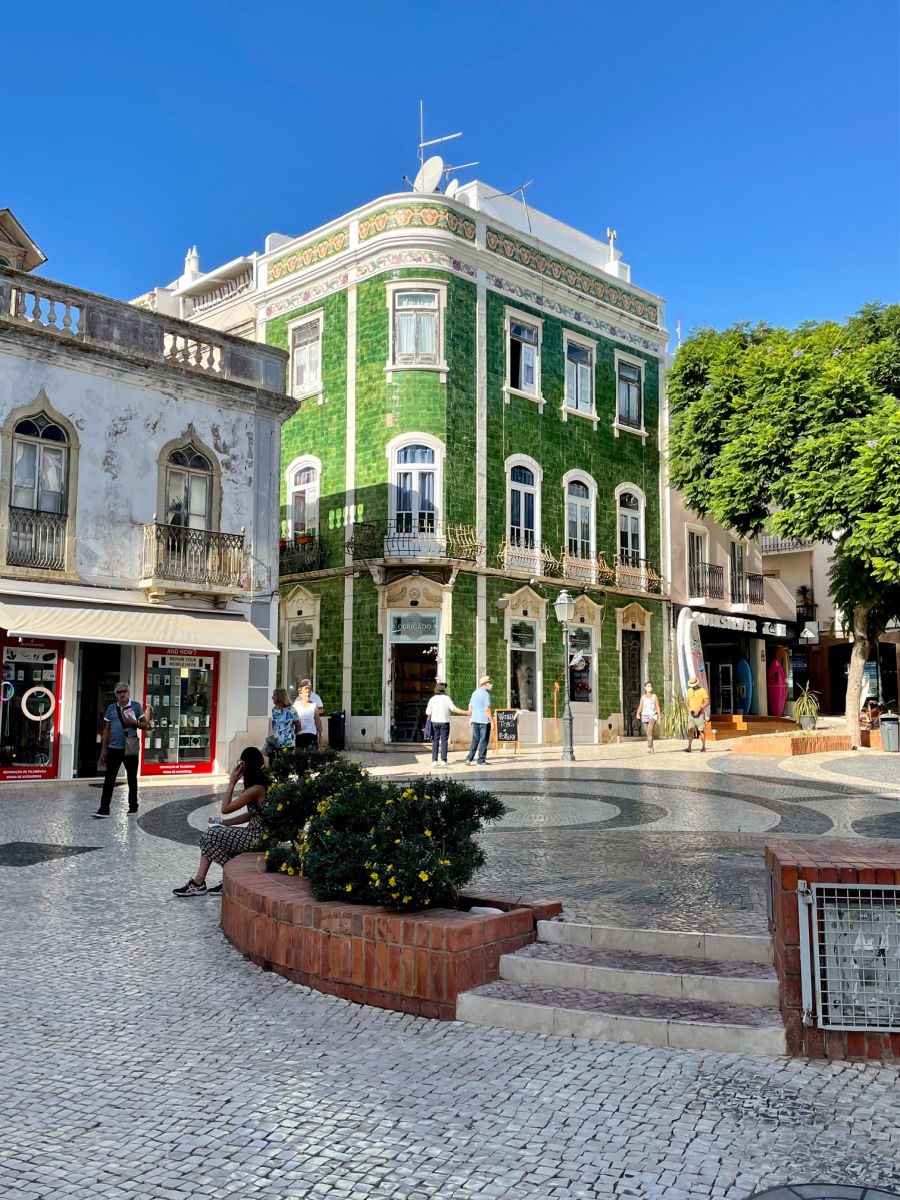
Make your way down the coast, stopping in Sagres, the southernmost point of Portugal. Sagres is known as a surfing destination, but if that isn’t for you, make a stop to see the Fortaleza de Sagres (Sagres Fortress). This fortified sea wall and surrounding cliffs make a natural look-out point. Sagres’ remote location on a peninsula keeps some of the crowds away, so you may want to check out the golden sands of Praia da Mareta.
If you want to see the westernmost point of mainland Europe, Cabo São Vicente lies around four miles from Sagres. There isn’t much to see beyond the lighthouse, and the winds can be whipping, so don’t worry about missing anything if you decide to skip it.
On your way to Lagos, make a stop in the former fishing village of Burgau. There are many scenic walking paths around Burgau and you will enjoy the colorful houses in town.
Next up, head to Lagos, one of the larger towns in the Algarve, it still maintains a small-town feel with a sparkling clean historic center and narrow streets with tiled sidewalks that are lined with shops and restaurants. You may want to take time to explore the town and the ancient city walls, and appreciate the influences of the Phoenicians, Carthaginians, Romans, and Moors who all invaded this region at one point in history. Another point of interest is the Igreja de Santo António, also known as the golden church due to the impressive baroque gilt work on display featuring cherubs and animals fashioned out of Brazilian gold.
Where to Stay in the Algarve
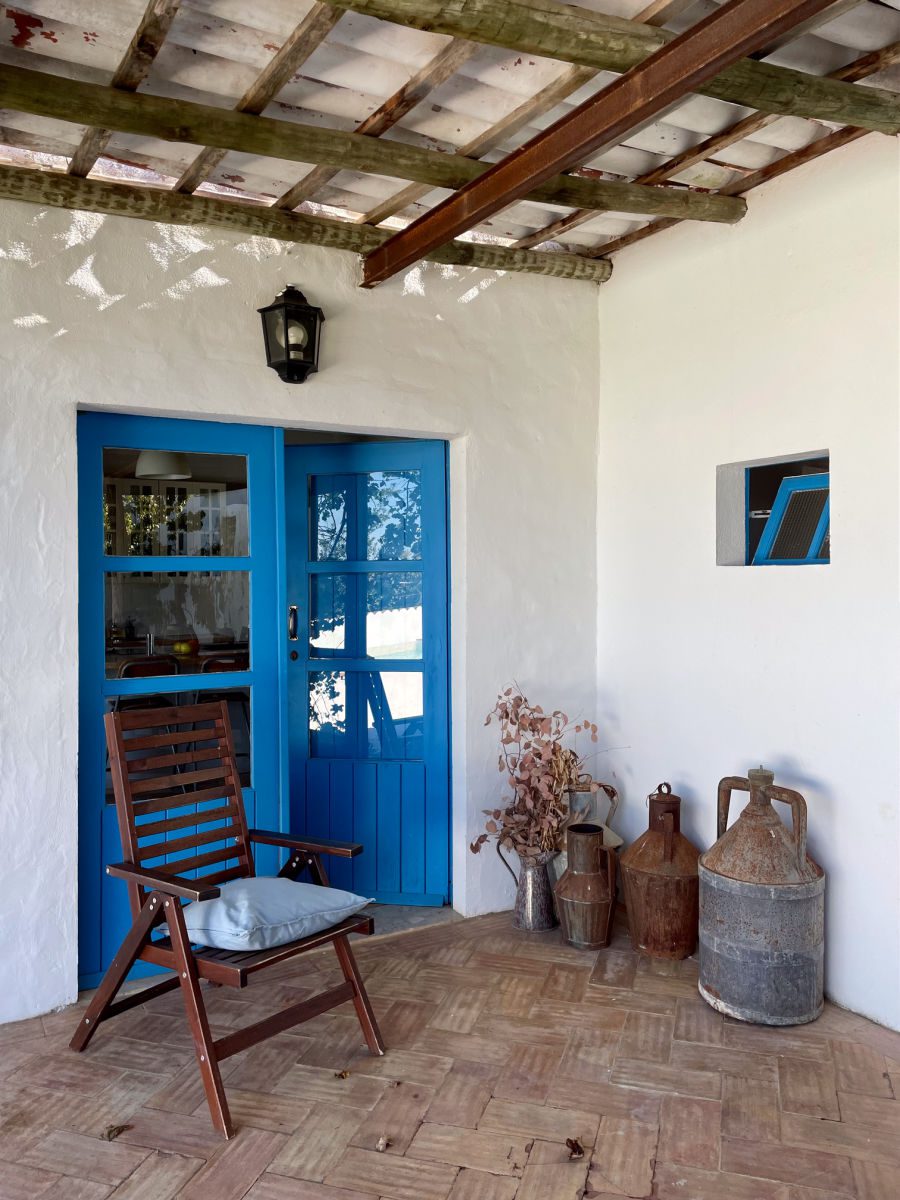
If you want to make the most of your stay in the Algarve, I would recommend avoiding some of the very popular towns like Albufeira or Faro. You are better off either staying slightly off the coast or all the way east or west in the Algarve. Personally, I loved the towns of Lagos and Carvoeiro, and I know Sagres is popular with surfers and families. A few recommendations on where to stay include:
- Morgado do Quintão — if you prefer a self-catering, authentic winery experience, take a look at the Morgado do Quintão. While not on the scenic coastline, this wine hotel is just a short drive to the dramatic cliffs and seaside villages. This landmark vineyard offers a rustic, but idyllic farm stay experience with three-bedroom cottages featuring a full farm kitchen and private pool. Breakfast can be provided by the kitchen in the main house as well.
- Casa Mae — located in Lagos, Casa Mae offers easy access to restaurants, shops, and historical attractions as well as the beaches and cliffs. The hotel features a farm-to-table restaurant, pool, and contemporary but minimalist decor using Portuguese traditions.
- Casa Modesta — located in Olhão, Casa Modesta is a family owned hotel that overlooks a natural park.
- Tivoli Carvoeiro Algarve Resort — every since staying in the Tivoli in Lisbon, I’ve been a fan of these luxury hotels. If you are looking for a larger resort property with a prime location and amazing views, the Tivoli Carvoeiro delivers.
- Martinhal Sagres Beach Resort — no one beats Martinhal when it comes to family-friendly resorts and this sprawling complex has something for everyone, making it one of my picks for best family hotels in Portugal.
Day 6: Lagos
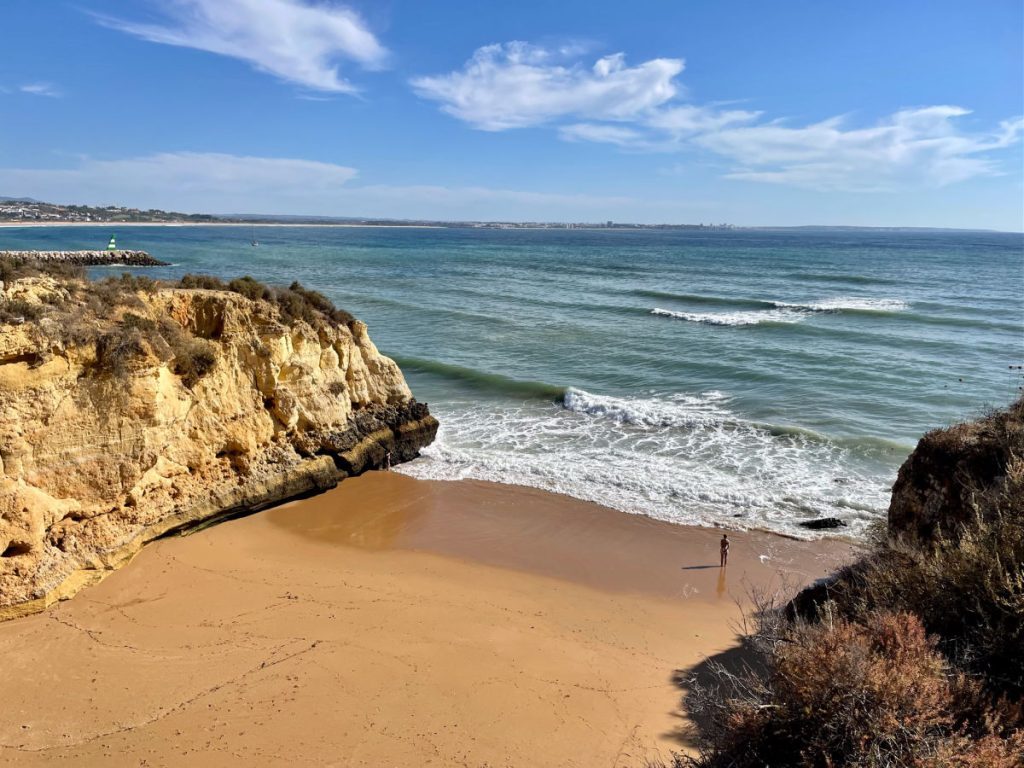
If you are staying in Lagos (or even if you are not), I would recommend spending the day exploring the nearby beaches and walking paths along the cliffs. Praia da Batata is a beautiful beach with a small beach bar. However, if you want something more intimate, walk over to Praia dos Estudantes. Set in a small cove, you can walk through a rock tunnel for a quieter beach with a view of the Roman bridge. Just keep an eye on the tides!
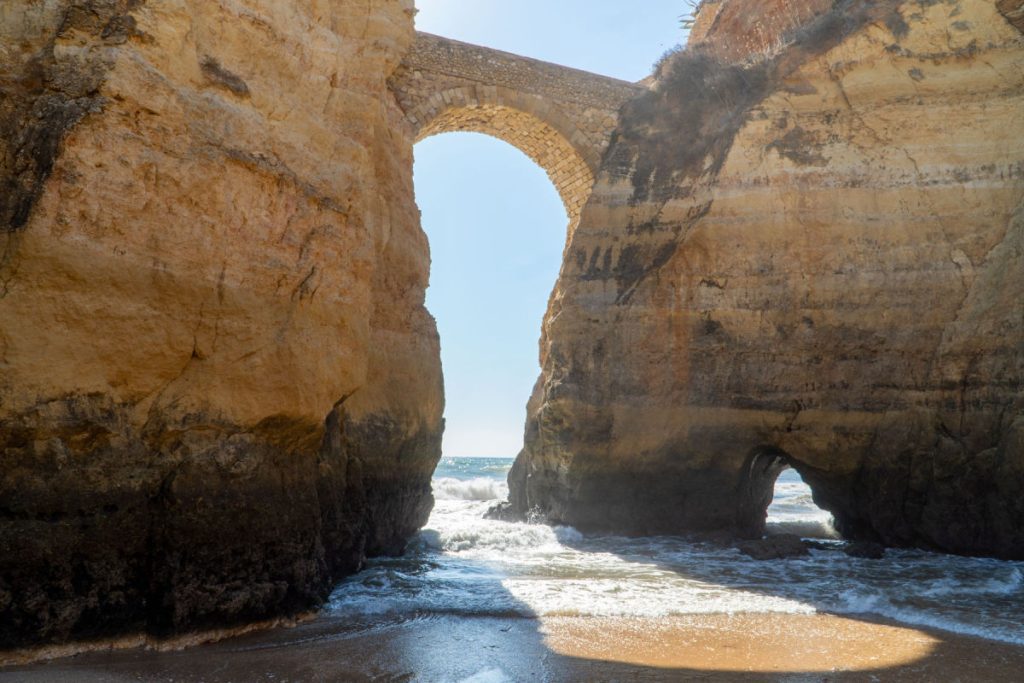
One of the prettiest spots is Praia do Camilo. You will need to wind your way down the 200+ wooden stairs to get there, but it is worth it. Next, drive or bike down to Ponta da Piedade. You can spend hours walking the paths along the coast here and just sitting and taking in the stunning viewpoints. Do make the effort to walk down the stairs to see the rock formations and cliffs from up close. Just keep in mind that going down is a lot easier than coming back up.
See more things to do in Lagos on your trip!
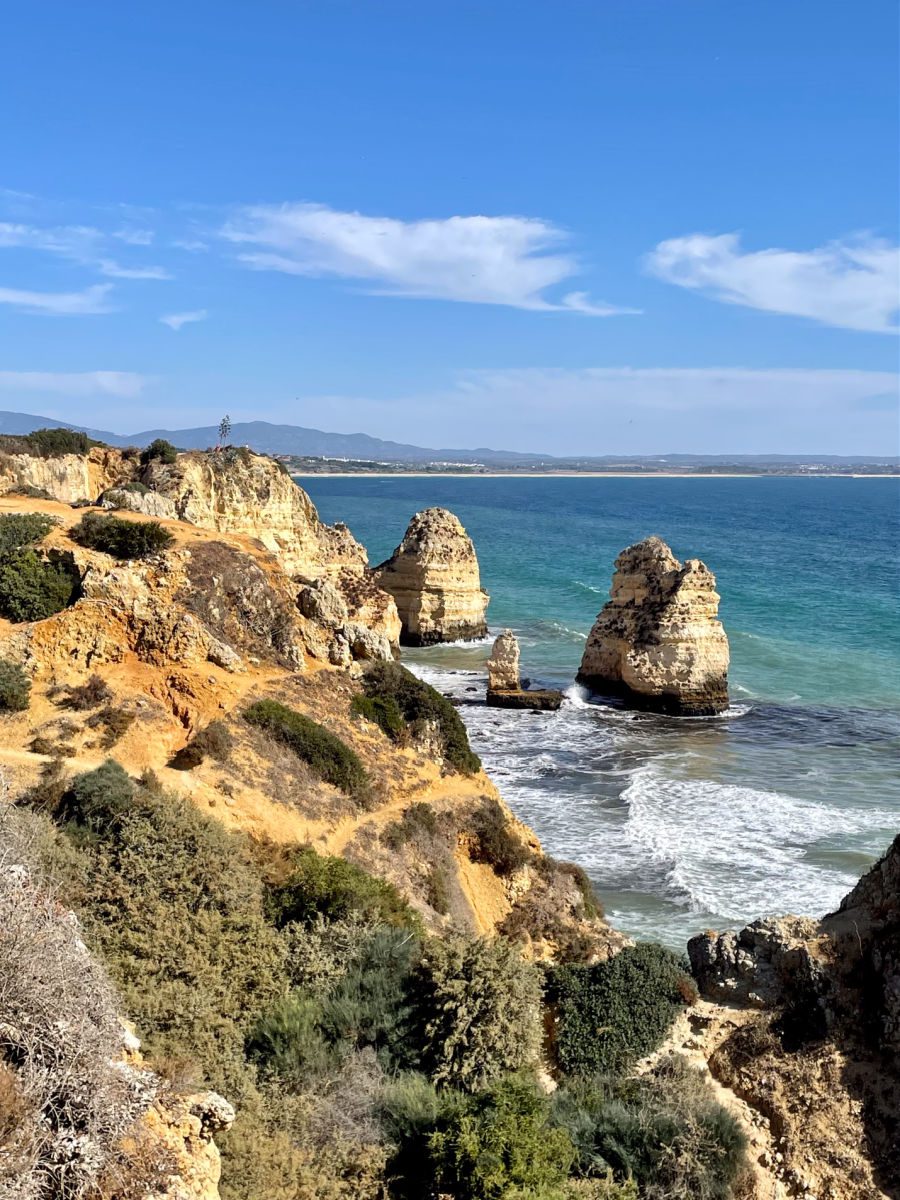
Day 7: Explore Towns & Beaches
You will also want to take a day to explore more of the towns and beaches along the coast. If you are staying near Sagres or Lagos, start in Carvoeiro. Carvoeiro is a fishing village turned tourist destination, but while it has some of the signs of the tourism influx from Irish Pubs to souvenir shops, it still maintains its small-town charm. There are plenty of restaurants and bars (I had a great peri peri chicken at Don Carvoeiro) too if you want to stop for lunch.
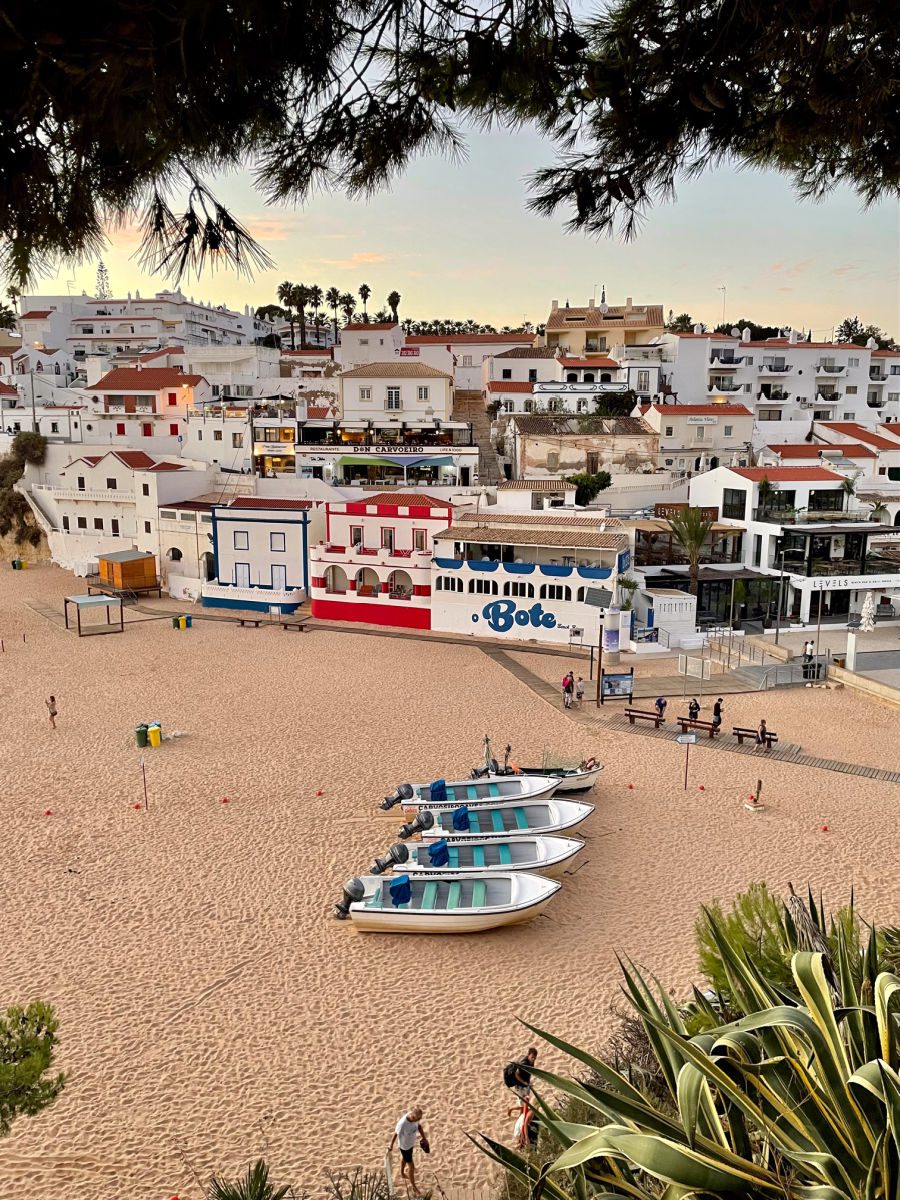
From Carvoeiro, you can walk along the cliffs to see some of the beautiful rock formations, like Algar Seco, which is for its rock windows. If you end up coming back through Carvoeiro, Restaurante Boneca Bar is a great spot to have a drink and dinner and enjoy the sunset. Also check out Praia de Vale Covo, where you can get a great view inside one of the Algarve’s cliff caves.
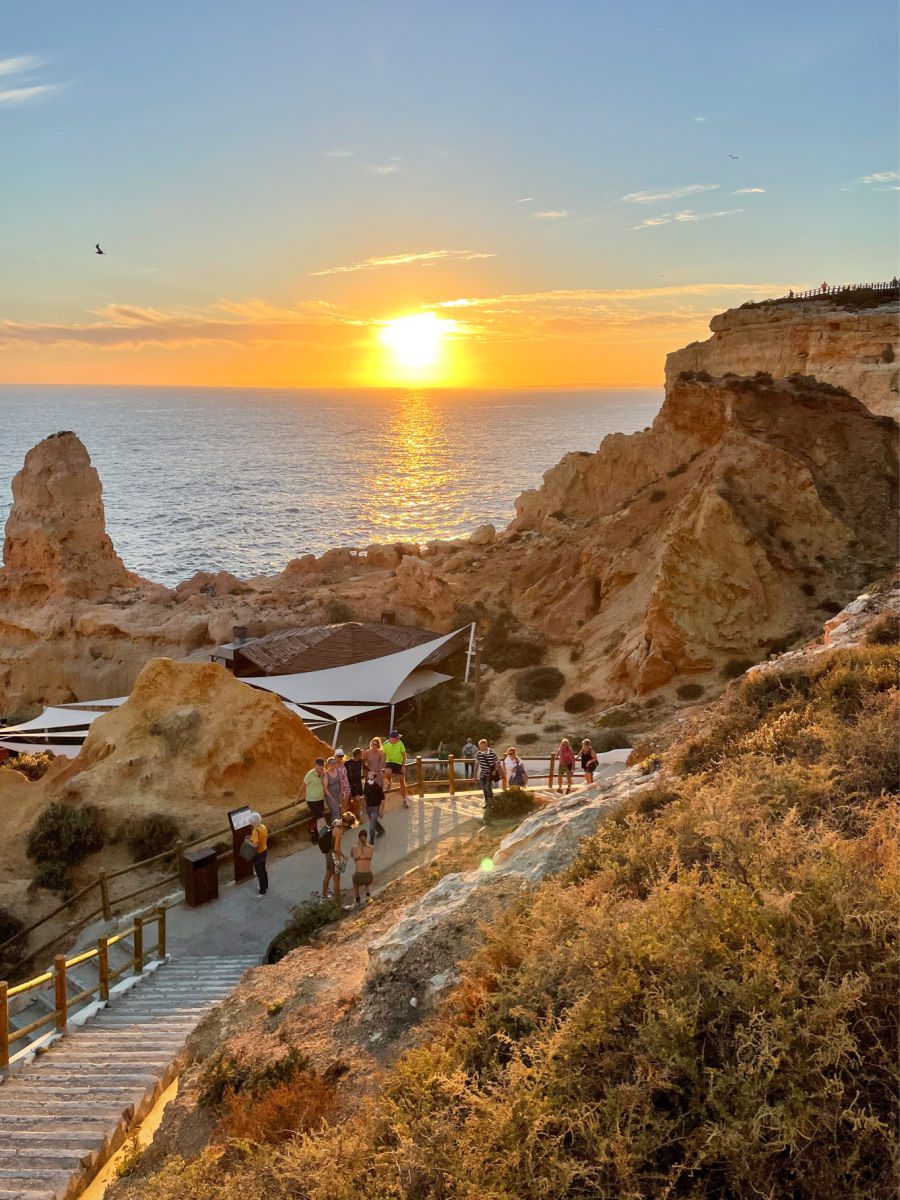
If you would like to visit some beaches, Praia da Marinha is often praised as one of the most beautiful beaches in the Algarve. Located between golden cliffs, you need to walk around a promontory of rock to get there so pay attention to the tides. Praia de Albandeira a little further east is another great pick. The right side of the beach offers a view of the Arco de Albandeira – a striking natural arch leading from the cliffs into the sea.
If you continue east along the coast, you will find Praia da Coelha, one of the quieter beaches in the Algarve. Or, if you prefer to explore towns, stop at Olhão. This cute fishing town has a pretty waterfront, fishing harbor, and a maze of cobblestone streets to explore. This is more of a working town than a tourist town, so it is where to go if you want to see an authentic Portuguese fishing village.
The town opens onto the Parque Natural da Ria Formosa, made up of saltwater lagoons and protected waterways that are home to extensive bird and marine life. You can explore this area by walking paths, kayaks, or boat tours that depart from the Olhão Harbor.
Don’t miss a visit to postcard-perfect Tavira. This is a white-washed village that is often cited as one of the prettiest towns in Portugal. Popular with tourists and Portuguese alike, take some time to explore the Moorish influences in the city center and enjoy the colorful buildings and intricate tilework. You can also visit the Praia do Barril, which is a pretty beach and home to the “Anchor Cemetary.”
Day 8: Watersports

You shouldn’t leave the Algarve without getting out onto the water. Of course one of the most popular excursions is a boat tour to the Benagil Sea Cave, whose domed arch and natural skylight are Instagram famous. Just keep in mind that this is extremely popular and can get very crowded. If you want to do it, it might be worth hiring a private boat.
Otherwise, there are plenty of other boat tours along the coast. I think a great way to explore the nooks and crannies of the coastline would be with a kayaking tour. If the water is calm, you can also enjoy stand-up paddleboarding. Families especially would also enjoy either a dolphin-watching tour or a snorkeling excursion in the summer.
Day 9: Fly Home
It is possible to fly from Faro, in the Algarve, to Lisbon to connect to your return flight home. However, you will want to check the times to make sure it can work. Otherwise, you need a very early morning drive up to Lisbon or to overnight in Lisbon before your return home.
Portugal Itinerary #4: Lisbon and Comporta
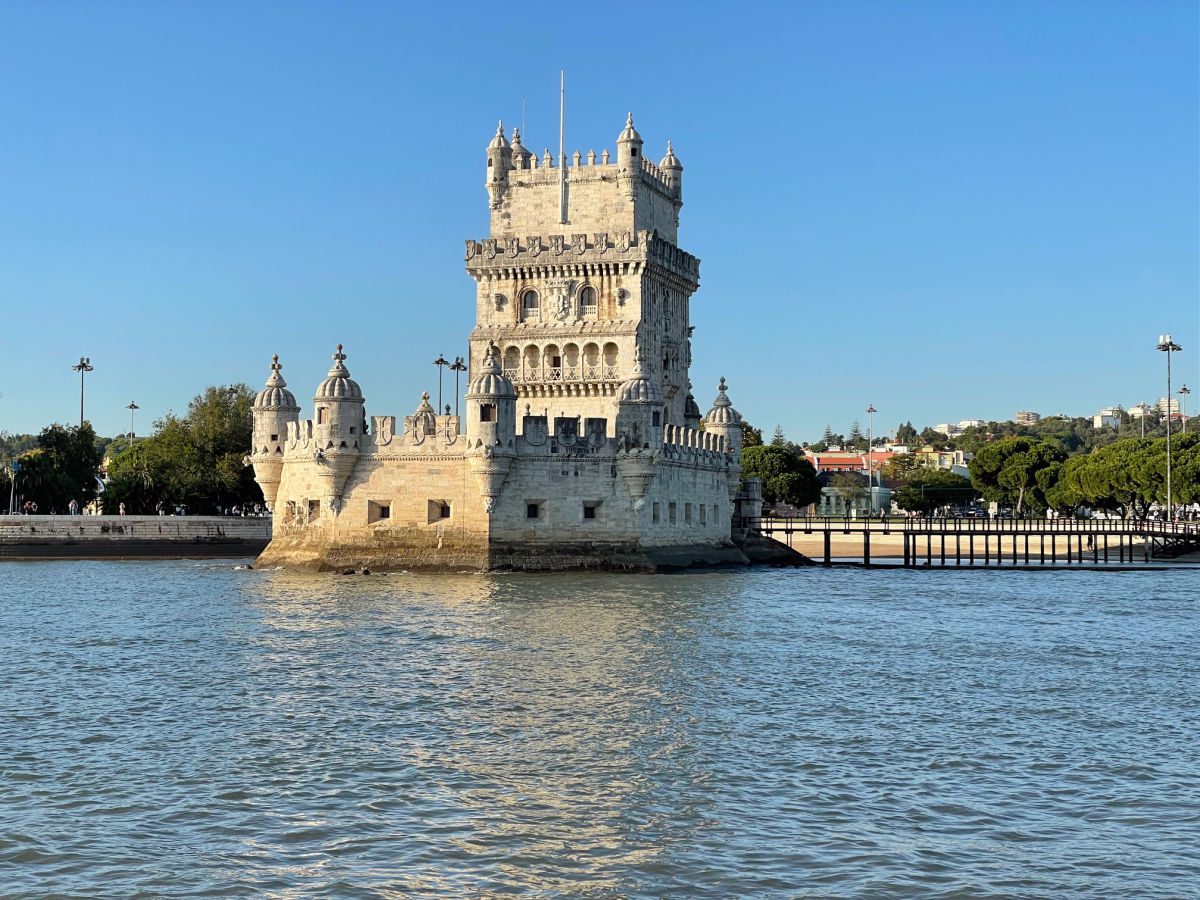
If you are visiting Portugal in the summer, it is nice to balance out a bit of city touring with downtime at the beach to beat the heat. If you don’t have a lot of time and want to spend more time relaxing than exploring towns or driving long distances, I would recommend pairing four days in Lisbon with three to four days in Comporta.
Comporta is a beach and golf town just one and a half hours south of Lisbon which has recently become popular with celebrities (Madonna has had a house here). The area is surrounded by rice fields, pine forests, and the gorgeous coast. The best beaches are wide and long, with soft sand and rolling dunes, so you won’t need to fight for a spot for your beach blanket, unlike some of the smaller beaches in the Algarve.
| Day | Highlights | Stay |
| 1 | Lisbon city highlights tour | Lisbon |
| 2 | Belem, Alfama, and sunset sail on the Tagus River | Lisbon |
| 3 | Day trip to Sintra | Lisbon |
| 4 | Lisbon food tour or day trip to Quinta de Sant’Ana, Navarre, or Obidos | Lisbon |
| 5 | Relaxation and sunset horseback ride on the beach | Comporta |
| 6 | Hiking, foraging, cooking class | Comporta |
| 7 | Water sports, golf, tennis, beach/pool, spa/yoga | Comporta |
When to Go
It makes sense to choose this itinerary if you are visiting from May through October, but beach lovers can appreciate the beauty of Comporta year-round.
Getting There
With its close proximity to Lisbon, you can always arrange a transfer for a car-free vacation, but then you are reliant on hotel shuttles to get you to the beach and back, as most aren’t located directly on the beach, and lines for those can get long. For the most flexibility, you should rent a car on your way out of Lisbon at the airport and then drop it off before you fly out.

Days 1-4: Lisbon
Follow the Lisbon itinerary from above for the first three days of your stay. However, on the third day, I would recommend either taking more time to explore the city with a food tour or other activity or enjoy a day trip to Óbidos, Nazare, and Fatima. I would skip Cascais this time around since you will be spending the next few days by the sea.
Where to Stay in Comporta
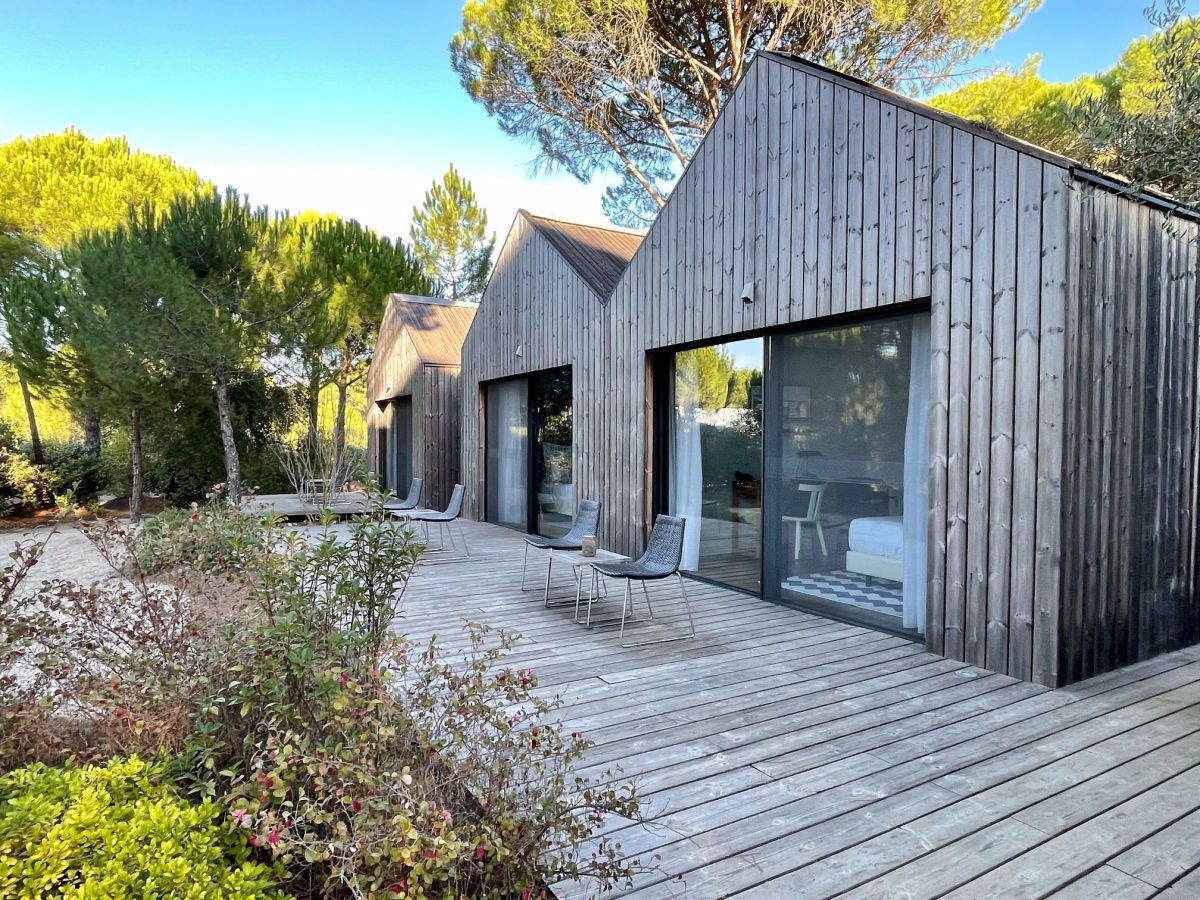
The Sublime Comporta would be my pick for accommodations for both couples, solo travelers, and families. This eco-friendly property has a nature lodge feel with the upscale amenities of a luxury property. The standard rooms are a bit small, so I would splurge for a bit of an upgrade, and families will love the multi-bedroom villa options. On-site you can enjoy the pool, spa, restaurants, and activities. A quick shuttle ride will get you to the beach and the independently-operated Sublime Comporta Beach Club.
Just a note that if you are looking at other properties, beware of those that are located close to the rice fields, especially in the summer. Those wetlands attract mosquitos that could make your stay unpleasant unless you are heavily doused in DEET each day.
Day 5-8: Comporta

The nice thing about this itinerary is that it is very laid back. If you want to spend the next four days at the beach — go for it! However, if you are interested in a few excursions, one to put on your list is a sunset horseback ride along the beach.
You can also give paddleboarding, kayaking, or even kite surfing a try in Comporta. Sublime Comporta can also arrange for wine tasting, picnics, dolphin tours, bird watching, tennis, golf, or private yoga sessions.
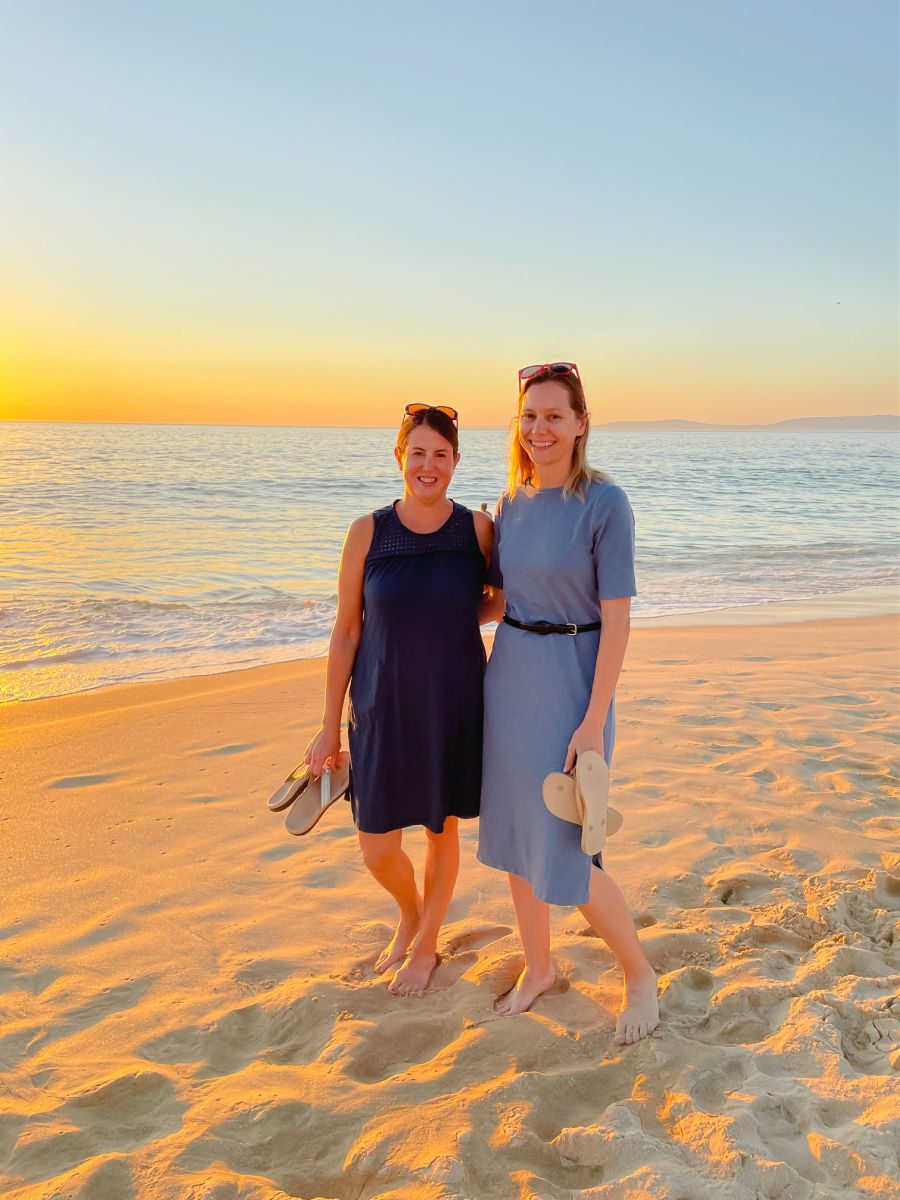
Day 9: Fly Home
Flying home is easy as Comporta is only an hour and a half or less to the Lisbon airport, making it a good option even if you only have five days in Portugal.
So there you have it, four different one-week Portugal itineraries. Remember, if you want some help planning your Portugal itinerary and discovering unique activities without the headache and time suck of doing all the research and planning, reach out to my partner EPIC Travel to see how they can help (and don’t forget to tell them you read about them on We3Travel!)
Save this to Pinterest
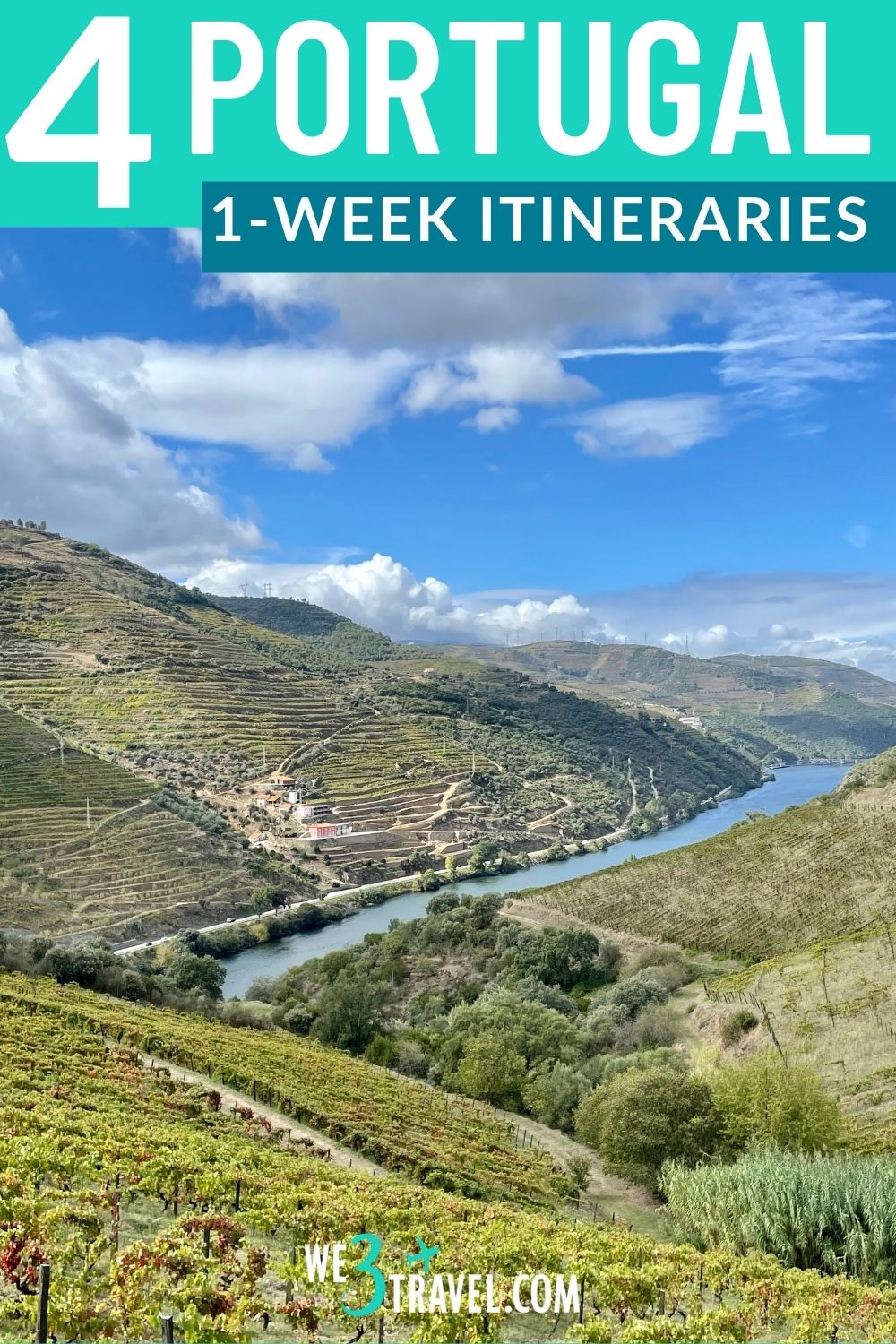

Tamara Gruber is the Founder and Publisher of We3Travel. A former marketing executive and travel advisor, Tamara is an award-winning travel writer and recognized expert in family travel. Tamara is a member of SATW, NATJA, IFWTWA, and the Adventure Travel Trade Association, and serves on the Board of the Family Travel Association. She is also the publisher of YourTimetoFly.com and the co-host of the Vacation Mavens travel podcast.



